

@military_cots www.MilitaryEmbedded.com March 2023 | Volume 19 | Number 2 John McHale MOSA savings metrics needed 7 University Update Maintaining the engineering pipeline 8 Mil Tech Trends UAS payloads: AI, open standards 24 Industry Spotlight MOSA and datacentricity 38 How data is fast becoming the U.S. Navy’s powerful secret weapon By Stephen Carlon, Accenture Federal Services P 14 P 30
UNMANNED SYSTEMS ISSUE

We Have You Covered from RF to Bits The industry’s most complete portfolio of ICs and modules. RF/µW Amplifiers/ TR Modules Analog Beamforming Frequency Conversion DAC ADC Converters and Transceivers Power Find your competitive advantage at analog.com/ADEF









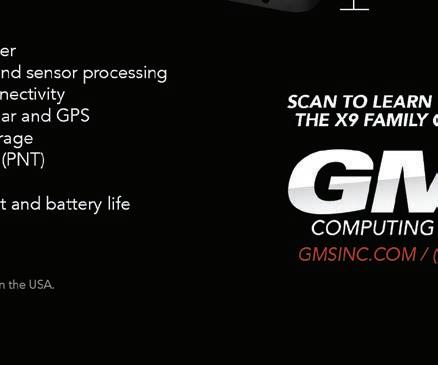 By John McHale
By Lisa Daigle
By Ivan Straznicky
Dan Taylor
By John McHale
By Lisa Daigle
By Ivan Straznicky
Dan Taylor
SPECIAL REPORT: Counter-UAS technology

14 How innovative technologies and a layered approach can make C-UAS solutions more effective
 By Flavia Camargos-Pereira,
By Flavia Camargos-Pereira,
Contributing Editor
By John Sturm and Matt Renola, Vicor
20 The fresh maintenance and sustainment challenges as UAVs take off in defense
By Matt Medley, IFS
MIL TECH TRENDS: Reduced SWaP designs for UAS payloads
24 AI, open standards to play key role in future SWaP designs for UAS payloads
By Dan Taylor, Technology Editor
30 How data is fast becoming the U.S. Navy’s powerful secret weapon
By Stephen Carlon, Accenture Federal Services
34 Lower-SWaP LOS radios help secure battlefields
By Jim
Benson,
Hiep Truong, and Mike Bontell, Benchmark
INDUSTRY SPOTLIGHT: MOSA solutions for unmanned systems

38 MOSA systems: The benefits of deploying a datacentric architecture
By Andre
Odermatt,
RTI
ON THE COVER:
Soldiers from 5th Armored Brigade, First Army Division West, developed a course of instruction to counter the threat of commercial off-the-shelf (COTS) unmanned aerial surveillance vehicles.
U.S. Army photo by Staff Sgt. Timothy Gray.
https://www.linkedin.com/groups/1864255/
@military_cots
Editor’s Perspective 7 MOSA savings metrics needed
COLUMNS
University Update 8 DoD works with universities to maintain interest, workforce in engineering
Mil Tech Insider 9 Optimizing 100G VPX
Defense Tech Wire
Guest Blog 28 Defense industry embraces the benefits of standardized power supplies
THE LATEST
10 By
Editor’s Choice Products 44 By Military Embedded Systems Staff Connecting with Military Embedded 46 By Military Embedded Systems Staff 4 March 2023 MILITARY EMBEDDED SYSTEMS www.militaryembedded.com All registered brands and trademarks within Military Embedded Systems magazine are the property of their respective owners. © 2023 OpenSystems Media © 2023 Military Embedded Systems
Print
ISSN:
1557-3222
FEATURES
Published by: www.militaryembedded.com
2023 Volume 19 | Number 2
March
TABLE OF CONTENTS
E-letter Live
news
20 30 To unsubscribe, email your name, address, and subscription number as it appears on the label to: subscriptions@opensysmedia.com
WEB RESOURCES Subscribe to the magazine or
industry
| Submit new products http://submit.opensystemsmedia.com WHITE PAPERS – Read: https://militaryembedded.com/whitepapers WHITE PAPERS – Submit: http://submit.opensystemsmedia.com
BEHLMAN LEADS THE PACK

FIRST PROVEN VPX POWER SUPPLIES DEVELOPED IN ALIGNMENT WITH THE SOSA™ TECHNICAL STANDARD
Behlman introduces the first test-proven VPX power supplies developed in alignment with the SOSA Technical Standard. Like all Behlman VPXtra® power supplies, these 3U and 6U COTS DC-to-DC high-power dual output units feature Xtra-reliable design and Xtra-rugged construction to stand up to the rigors of all mission-critical airborne, shipboard, ground and mobile applications.

VPXtra® 1000CD5-IQI
> 6U power module developed in alignment with the SOSA Technical Standard
> Delivers 1050W DC power via two outputs
> VITA 46.11 IPMC for integration with system management
VPXtra® 700D-IQI
> 3U power module developed in alignment with the SOSA Technical Standard
> Delivers 700W DC power via two outputs
> VITA 46.11 IPMC for integration with system management
: 631-435-0410 : sales@behlman.com : www.behlman.com : 631-435-0410 : sales@behlman.com : www.behlman.com The Power Solutions Provider
AGAIN!
SOSA™ and logo design and The Open Group Certification Mark™ are trademarks of The Open Group in the United States and other countries.
ADVERTISERS
Analog Devices, Inc. –
We have you covered from RF to bits
AUVSI.org – Xponential.org –
Blueprint for autonomy
Behlman Electronics, Inc. –
The race to open systems –Behlman leads the pack again!
Elma Electronic –
Quality testing to meet the toughest requirements
GMS – X9 Spider. The world’s most powerful full-featured wearable computer
LCR Embedded Systems, Inc. –Rugged solutions. Ready for what lies ahead
Mercury Systems, Inc. –
The next big thing in RFSoC is here. And it’s only 2.5” x 4”
Navy League Sea Air Space –www.seaairspace.org
Phoenix International –
Phalanx II: The ultimate NAS
SeaLevel Systems, Inc. –
What’s better than our sync serial hardware? Our software.
WinSystems – Embed mission success
EVENTS
Sea-Air-Space
April 3-5, 2023
National Harbor, MD
https://seaairspace.org/
SOF Week 2023 (USSOCOM)
May 8-11, 2023
Tampa, FL
https://www.sofweek.org/
XPonential 2023 (AUVSI)
May 8-11, 2023
Denver, CO
https://www.xponential.org/ xponential2023/public/enter.aspx
GROUP EDITORIAL DIRECTOR John McHale john.mchale@opensysmedia.com
ASSISTANT MANAGING EDITOR Lisa Daigle lisa.daigle@opensysmedia.com
TECHNOLOGY EDITOR – WASHINGTON BUREAU Dan Taylor dan.taylor@opensysmedia.com
CREATIVE DIRECTOR Stephanie Sweet stephanie.sweet@opensysmedia.com
WEB DEVELOPER Paul Nelson paul.nelson@opensysmedia.com
EMAIL MARKETING SPECIALIST Drew Kaufman drew.kaufman@opensysmedia.com
WEBCAST MANAGER Ryan Graff ryan.graff@opensysmedia.com
VITA EDITORIAL DIRECTOR Jerry Gipper jerry.gipper@opensysmedia.com
SALES/MARKETING
DIRECTOR OF SALES Tom Varcie tom.varcie@opensysmedia.com (734) 748-9660
DIRECTOR OF MARKETING Eric Henry eric.henry@opensysmedia.com
OPERATIONS & AUDIENCE DEVELOPMENT (541) 760-5361
STRATEGIC ACCOUNT MANAGER Rebecca Barker rebecca.barker@opensysmedia.com (281) 724-8021
STRATEGIC ACCOUNT MANAGER Bill Barron bill.barron@opensysmedia.com (516) 376-9838
STRATEGIC ACCOUNT MANAGER Kathleen Wackowski kathleen.wackowski@opensysmedia.com (978) 888-7367
SOUTHERN CAL REGIONAL SALES MANAGER Len Pettek len.pettek@opensysmedia.com (805) 231-9582
DIRECTOR OF SALES ENABLEMENT Barbara Quinlan barbara.quinlan@opensysmedia.com AND PRODUCT MARKETING (480) 236-8818
INSIDE SALES Amy Russell amy.russell@opensysmedia.com
STRATEGIC ACCOUNT MANAGER Lesley Harmoning lesley.harmoning@opensysmedia.com
EUROPEAN ACCOUNT MANAGER Jill Thibert jill.thibert@opensysmedia.com
TAIWAN SALES ACCOUNT MANAGER Patty Wu patty.wu@opensysmedia.com
CHINA SALES ACCOUNT MANAGER Judy Wang judywang2000@vip.126.com
WWW.OPENSYSMEDIA.COM
PRESIDENT Patrick Hopper patrick.hopper@opensysmedia.com
EXECUTIVE VICE PRESIDENT John McHale john.mchale@opensysmedia.com
EXECUTIVE VICE PRESIDENT AND ECD BRAND DIRECTOR Rich Nass rich.nass@opensysmedia.com
ECD EDITOR-IN-CHIEF Brandon Lewis brandon.lewis@opensysmedia.com
TECHNOLOGY EDITOR Curt Schwaderer curt.schwaderer@opensysmedia.com
ASSOCIATE EDITOR Tiera Oliver tiera.oliver@opensysmedia.com
ASSOCIATE EDITOR Taryn Engmark taryn.engmark@opensysmedia.com
PRODUCTION EDITOR Chad Cox chad.cox@opensysmedia.com
CREATIVE PROJECTS Chris Rassiccia chris.rassiccia@opensysmedia.com
GRAPHIC DESIGNER Kaitlyn Bellerson kaitlyn.bellerson@opensysmedia.com
FINANCIAL ASSISTANT Emily Verhoeks emily.verhoeks@opensysmedia.com
SUBSCRIPTION MANAGER subscriptions@opensysmedia.com
CORPORATE OFFICE
1505 N. Hayden Rd. #105 • Scottsdale, AZ 85257 • Tel: (480) 967-5581
REPRINTS
WRIGHT’S MEDIA REPRINT COORDINATOR Kathy Richey clientsuccess@wrightsmedia.com (281) 419-5725
6 March 2023 MILITARY EMBEDDED SYSTEMS www.militaryembedded.com WEBCAST MOSA Virtual Summit 2023 –Powered by Military Embedded Systems (This is an archived webcast.) https://bit.ly/3T4eoaC
PAGE ADVERTISER/AD TITLE 2 27 5 37 3 19 48 29 41 17 23
MOSA savings metrics needed
By John McHale, Editorial Director John.McHale@opensysmedia.com
While most leaders in the U. S. Department of Defense (DoD) understand the basic value of open architectures, they need to see metrics on already-realized cost and scheduled savings, said David Tremper, Director, Acquisition Integration and Interoperability, Office of the Undersecretary of Defense in his keynote address at the MOSA [Modular Open Systems Approach]
Virtual Summit held February 22 and hosted by myself and Military Embedded Systems.

“Nobody argues the merits of open architectures,” he said. “What’s currently challenging the ability to start fist-pounding and say let’s apply that here and let’s apply that there is that I don’t think department leadership is hearing the message about what’s been realized in cost and scheduled savings for the department.”
Department leadership needs to start seeing examples of savings of $20 million or savings of 16 months of development timeline because an open architecture was used, Tremper continued. “[Until then] we’re going to be hard-pressed to really see change that starts enforcing these things in system development.”
This is a profound opportunity for the community to start collecting those “quantifiable metrics of value-added” and sharing them with DoD leadership, he added.
He listed feedback he heard directly from the Sensor Open System Architecture (SOSA) Technical Standard community illustrating these savings.
› “The cost to generate a proposal has gone down 75%.”
› “The reusable NRE compounds, creating billions in savings when companies apply SOSA across multiple programs.”
› “High TRL [technology readiness level] system that used to take us 24 months to build is now available in under six months.”
› “The new funding we get is going toward new capability development, not platform integration.”
Tremper also noted how SOSA has given small businesses an opportunity to develop technology for the defense industry.
“Small businesses with niche capability have had a hard time getting into bigger acquisition programs because they were not part of the prime community. [Now putting the] government in a position where it can bring in a third-party integration of hardware and software is profoundly important for smallbusiness insertion into big acquisition.”
Even with the metrics there are still doubts, misconceptions, and red herrings about open architectures that program managers and senior department leaders – “who may not be the technical experts” – need to be educated on so that they are not dissuaded by them, Tremper said.
Some examples of the red herrings (which he also called “flaming arrows”) are:
› “They don’t support my legacy requirements.”
› “The system design will be more expensive so there will be no overall cost savings.”
› “It’s not mature enough to do my application.”
› “As soon as the standards change, we’ll be obsolete.”
“These comments come up all the time within the Pentagon when we’re talking about open architectures,” Tremper said.
Tremper called for open architecture advocates to be clear and proactive when addressing these red herrings so that when a senior program manager “is attempting to make a decision and some naysayer comes along and says you can’t do that because it’s not mature enough, then the program manager or senior leader is armed to defend against that.”
Tremper also delved into inflection points he found in DoD electronic warfare (EW) acquisition efforts that showed a profound need for MOSA strategies. To hear his entire presentation, register here to watch it on demand: https://tinyurl.com/fk5bk3x9.

Following Tremper’s Summit keynote, the summit sessions covered the Future Airborne Capability Environment (FACE) Technical Standard, the Navy’s Hardware Open System Technology (HOST) standard, how MOSA is applied to crewed and uncrewed aviation platforms, C5ISR, EW systems, and other applications.
Our speakers included Alicia Taylor, Future Airborne Capability Environment (FACE) Consortium Program Director, The Open Group; Chip Downing, Senior Market Development Director, Aerospace & Defense, Real-Time Innovations (RTI); Alex Wilson, Director, A&D Industry Solutions, Wind River; Rodger Hosking, Director of Sales, Mercury Systems, Saddle River, New Jersey; Ken Grob, Director of Embedded Computing Architectures, Elma Electronic; Nigel Forrester, Director of Strategy, Concurrent Technologies; Noah Donaldson, Chief Technical Officer, Annapolis Micro Systems; Lt. Cmdr. Ryan Camasso, Naval Air Systems Command (NAVAIR) Avionics Architecture Team (AAT) military lead and PMA-209 Deputy Program Manager; and Sean McCormick, Lead Engineer, NAVAIR PMA-209 Avionics Architecture Team.
EDITOR’S PERSPECTIVE
David Tremper
www.militaryembedded.com MILITARY EMBEDDED SYSTEMS March 2023 7
DoD works with universities to maintain interest, workforce in engineering
By Lisa Daigle, Assistant Managing Editor

Walk around any defense-industry trade show floor in the last several years, or talk to defense-industry company officials, and one of the most pressing topics is the “gray-hair” issue. Even though new crops of engineers certainly enter the profession every year, statistics do bear out the anecdotal evidence of the aging of the defense-industry workforce. The National Science Foundation (NSF) found in 2021 that nearly 30% of all engineering and science degree holders in the labor force were 50 or over and expected to retire in the following 15 years.
David Honey, the DoD’s deputy undersecretary of defense for research and engineering, spoke at the February 2023 National Engineers Week commemoration at the Pentagon and outlined some of the DoD’s initiatives aimed at students and young engineers.
In Honey’s keynote speech, he noted that the U.S. DoD is one of the world’s largest engineering organizations, employing more than 100,000 engineers. “Here, engineers share a unique mission to advance cutting-edge engineering technology, systems and practices, and specializations that range from cyber and space to hypersonics and quantum science and more,” according to the DoD’s account of the event.
Student engineers who are interested in working in defense can avail themselves of a variety of opportunities, Honey said, including the so-called SMART Scholarship, which is the DoD’s Science, Mathematics, and Research for Transformation [SMART] Scholarship. This initiative offers scholarships for undergraduate, master’s, and doctoral students who are currently pursuing a degree in one of 21 key STEM [science, technology, engineering and math] disciplines.
The recipients of the SMART scholarships are chosen, matched with a DoD laboratory that is relevant to their field of study, and awarded a full-tuition scholarship. Summer internships at those laboratories then turn into post-graduation jobs, with the students able to work at that same installation for a period of time that matches their scholarship.
Another DoD opportunity for those studying engineering is the Vannevar Bush Faculty Fellowship (VBFF). This highly competitive award – named in honor of Dr. Vannevar Bush, who directed the Office of Scientific Research and Development after World War II – is awarded yearly, aimed at advancing university-based fundamental research.
VBFF program director Dr. Jean-Luc Cambier has called the fellowship the defense department’s most prestigious research grant award: “It is oriented towards bold and ambitious ‘blue
sky’ research that will lead to extraordinary outcomes that may revolutionize entire disciplines, create entirely new fields, or disrupt accepted theories and perspectives.”
In Honey’s National Engineers Week speech, he described the VBFF as supporting “new, out-of-the-box ideas where researcher creativity intersects with the unknown.” DoD materials reveal that each Fellow receives as much as $3 million over the five-year fellowship term to pursue cutting-edge fundamental research projects. The 2022 class of VBFF recipients – now working at their universities and with DoD laboratories and leadership –includes engineers and scientists from Stanford University, Cal Tech, University of Michigan, and Brown University.
Another way to get involved as an engineer or as a student pursuing a degree in a STEM program is through one of the DoD’s University Affiliated Research Centers (UARCs), which operate as DoD-supported nonprofit research organization affiliated with a university with a specific area of expertise that supports the long-term needs of the department.
In January 2023, the DoD announced the creation of its 15th UARC, which will be centered at Howard University in Washington, D.C. Howard is the first historically Black college or university (known as an HBCU) to lead a UARC. Howard’s UARC will focus on tactical autonomy, which the U.S. Air Force defines as “autonomous systems acting with delegated and bounded authority of humans in support of tactical, short-term actions associated with a longer-term strategic vision.”
Since being named in January 2023, Howard University has been working with the Air Force Research Lab (AFRL) to choose research topics, on which Howard will take the lead with a consortium of HBCUs, including Jackson State University (Mississippi), Tuskegee University (Alabama), Hampton University (Virginia), Bowie State University (Maryland), Norfolk State University (Virginia), Delaware State University, Florida Memorial University, and Tougaloo College (Mississippi).
In the AFRL announcement regarding the Howard University UARC, Seana McNeal, deputy UARC program manager, emphasized the importance of STEM education and outreach as a major component of the Howard University center. Such outreach will include students in primary and high schools, plus trade, vocational, and college courses. The STEM education facet is important, McNeal asserted, in order to expand the workforce in tactical autonomy. “In order for us to remain leaders in defense, we need to have the best and the brightest, whether they’re working directly for the government or within our industrial base.”
UNIVERSITY UPDATE
8 March 2023 MILITARY EMBEDDED SYSTEMS www.militaryembedded.com
Optimizing 100G VPX
At the 2018 Embedded Tech Trends conference, results were presented from early simulations that conclusively established 100 Gigabit Ethernet could be successfully implemented on VPX using existing and newly announced copper connectors. At that time, many in the industry thought that optical interconnects and fiber would be required to support 100 GbE speeds.
VPX began back in 2005 with a focus on protocols such as Serial RapidIO, which were operating around 2.5 to 3.1 Gbaud/sec per lane. As these protocols progressed with successive generations, and new protocols were considered and adopted, transmission speeds increased substantially. It wasn’t long before industry was designing Gen 3 VPX products at 8 Gbaud for PCI Express and 10 Gbaud for 40G Ethernet. Then along came higher-speed PCIe Gen 4 (16 Gbaud) and 100G Ethernet (25 Gbaud) and it became evident that the VPX transmission channel needed an upgrade. (Figure 1.)
One of the main elements of the transmission channel is the VPX connector, which is a key enabling technology for 100G systems. Although it was proven back in 2018 that 100G could be achieved using the first two generations of VPX connectors (known as RT2), the more recent VITA 46.30 Higher Data Rate VPX Standard – which supports data rates to at least 25 Gbaud per lane – enables more signal margin and supports larger systems. Currently, there are two options for VITA 46.30 connectors: the TE Connectivity RT3 and Amphenol R-VPX EVO2 connectors, both of which meet the ANSI/VITA 46.30 standard intended for 100G (4-lanes @ 25 Gbaud) systems, and potentially beyond.

One of the main tenets of VPX and OpenVPX is interoperability, and that concept extends to the signal integrity (SI) of the VPX channel. The VITA 68 (VPX Compliance Channel) series of standards addresses the SI interoperability of OpenVPX modules and backplanes. The most recent addition to VITA 68 is VITA 68.3, which is intended for 16G (PCIe Gen 4) and 100G channels. At these speeds, each of the physical blocks that comprise the parts of the VPX transmission channel needs to be modeled in 3D using specialized tools such as Ansys HFSS, and then solved in the frequency domain to create so-called “s-parameter” characteristics. It is these s-parameters that get stitched together to form the channel model in VITA 68.3.
The figure of merit for a good 100G channel is a calculation called channel operating margin (COM), a measure of the overall signal to noise ratio. The IEEE 802.3 Ethernet standard states that COM should be greater than 3 dB for a measured channel. VITA 68.3 uses simulations rather than quantitative measurements, and measured data shows that 100G VPX performance needs to be greater than 3.5 dB in VITA 68.3 to provide a reliable signal channel.
By Ivan Straznicky
As an example of how to use VITA 68.3, Curtiss-Wright has simulated 100G VPX Fabric100 modules at either end of the VPX channel – and using two VITA 68.3 cases (i.e., long lossy and med-long lossy) – resulting in a comfortable margin of at least 0.25 dB over the 3.5 dB requirement. In this scenario, the Fabric100 simulated modules are based on several worst-case assumptions, so results will only improve in many applications.
Multiple rounds of testing prove that the products and channels will meet the COM target and are the base of the proposed 3.5 dB COM target for VITA 68.3.
For the warfighter, today’s technology is all about datacentricity, meaning they receive the relevant data they need when they need it to make superior decisions. In fact, 100G connectivity and digital convergence are enabling that kind of decision-making superiority through open standards like CMOSS [C5ISR/Electronic Warfare Modular Open Suite of Standards], SOSA [Sensor Open Systems Architecture], and VITA.
The VITA Standards Organization is already looking ahead to the next generations of VPX: Study groups are actively investigating what it will take to implement even higher speeds and bandwidths using protocols such as PCI Express 5.0, operating at 32 Gbaud, and 200G Ethernet, which complicates signal integrity with PAM4 (multibit) encoding. There is even discussion of going up to 400G Ethernet, increasing signal speeds up to 50 Gbaud.
With the Modular Open Systems Approach (MOSA) mandate now firmly entrenched in the defense-electronics industry, the VITA 68 signal-integrity standards have paved, and will continue to pave, the path to high performance and true interoperability that MOSA delivers to the warfighter.

MIL TECH INSIDER
An industry perspective from Curtiss-Wright Defense Solutions
www.militaryembedded.com MILITARY EMBEDDED SYSTEMS March 2023 9
Figure 1 | The VPX connector, a main element of the VPX transmission channel, is a key enabling technology for 100G systems.
DEFENSE TECH WIRE
By Dan Taylor, Technology Editor

Radars, C-UAS systems heading to Ukraine in DoD aid package
The U.S. Department of Defense (DoD) will send radars, counter-uncrewed air systems (C-UAS) technology, air defense units, and more in its latest aid package to Ukraine, the Pentagon announced. The package includes “a presidential drawdown of security assistance, valued at as much as $425 million, as well as $1.75 billion in Ukraine Security Assistance Initiative funds,” according to the DoD statement.
In addition to equipment, vehicles, and munitions, the DoD package includes radars for Ukraine air-defense systems, equipment to sustain existing air-defense capabilities in Ukraine, C-UAS systems, air surveillance radars, Puma UASs, counterartillery radars, and secure communications equipment. To date, the U.S. government has committed $29.3 billion in security assistance to Ukraine since Russia’s February 2022 invasion. Additionally, Congress approved $113 billion in aid to Ukraine in 2022. By contrast, Russia’s proposed 2023 defense budget was $84 billion.
Satellites tested via MQ-9 Reaper UAS
Officials tested an MQ-9A Reaper uncrewed aerial system (UAS) equipped with a low-Earth orbit (LEO) satellite communications command and control system in a joint test conducted by MQ-9 manufacturer General Atomics Aeronautical Systems, Inc. (GA-ASI) along with the U.S. Marine Corps, the U.S. Air Force, and the Air National Guard, the company announced in a statement. The flight test, which was based out of GA-ASI’s Gray Butte Flight Operations Facility in California, took place after several weeks of ground testing. The test was meant to demonstrate that an MQ-9A (or an MQ-9B or MQ-1) equipped with this capability could provide global coverage and connectivity. The technology, say GA-ASI officials, is intended to facilitate connectivity that enables operators to pass much more data to and from the aircraft.
SIGINT/EW sensor system for U.S. Army vehicles coming from General Dynamics


General Dynamics Mission Systems won a $5.5 million contract for the sustainment of Prophet Enhanced sensor systems for the U.S. Army. A GDMS announcement describes the Prophet Enhanced as an all-weather tactical signals intelligence (SIGINT) and electronic warfare (EW) support sensor system fielded on ground vehicles to provide force protection, situational awareness, and target development for U.S. Army units. This is the first delivery order under the initial contract, which was awarded during January 2023 and has a ceiling of $481.6 million over a five-year period.
General Dynamics will provide the Army’s Integrated Logistics Support Center (ILSC) with ongoing sustainment services. Under the terms of the contract, the company will also provide spare parts and obsolescence risk management and will make available contracted field-service representatives to support system readiness.
Figure 1 | U.S. Air Force photo by Senior Airman Karla Parra.
Figure 2 | General Dynamics photo.
NEWS | TRENDS | D o D SPENDS | CONTRACTS |
10 March 2023 MILITARY EMBEDDED SYSTEMS www.militaryembedded.com
TECHNOLOGY UPDATES
Small UAS launched from another drone in U.S. Army test
A small uncrewed aerial system (UAS) was launched from another UAS – the MQ-1C Gray Eagle Extended Range – in a U.S. Army test at Dugway Proving Grounds in Utah recently, according to a statement from manufacturer General Atomics Aeronautical Systems (GA-ASI).

GA-ASI flew a survivable air-launched effect (ALE) vehicle known as Eaglet from an MQ-1 during the test, which was jointly funded by GA and the Army. The company’s statement notes that the UAS was built to be a low-cost, survivable system able to be launched from a drone like the Gray Eagle, from a rotary aircraft, or from a ground vehicle, adding that the intent of such a small UAS is to enable extended reach of sensors and increased lethality while providing survivability for manned aircraft. The company states that that the Gray Eagle can carry Eaglet for thousands of kilometers before launching.
Naval exercise integrates AI and unmanned technology U.S. Naval Forces Central Command (NAVCENT) and naval personnel from the United Arab Emirates (UAE) concluded a weeklong uncrewed systems and artificial intelligence (AI) integration exercise in the Arabian Gulf in mid-February of 2023. According to the report from the U.S. Navy, five unmanned surface vessels (USVs) from NAVCENT’s Task Force 59 and UAE’s navy operated off the coast of the UAE, during which USV-mounted cameras and sensors captured imagery and video of vessels sailing nearby, which was transmitted ashore where AI platforms helped to detect, identify, and classify the information.
Lt. Jay Faylo, Task Force 59’s lead exercise planner, says that the exercise enabled partners to further train AI platforms to sort through data sets, which will enhance detection capabilities. The Navy reports that the USVs used in the exercise included the L3 Harris Arabian Fox MAST-13, an Ocean Aero Triton, and two Saildrone Explorers.
MOSA-compatible satellite will launch in 2023
Lockheed Martin has completed the assembly of the first LM 400 multimission spacecraft ahead of its first launch later during 2023, the company announced. The LM 400 is a midsized satellite built to conduct remote sensing, communications, imaging, radar, and persistent surveillance missions for military, civil, or commercial users. It is currently under contract with the U.S. Space Force’s Missile Track Custody program in mediumearth orbit.
For potential military applications, the LM 400 conforms to Modular Open Systems Architecture [MOSA] standards for interoperability with other U.S. military services’ platforms, Lockheed Martin officials noted. LM 400 includes Lockheed’s software-defined satellite architecture, which provides data-processing capabilities for troops.
Demand for remote weapons stations rising amid increasing global tensions

An increasing demand for remote weapons stations in close-combat situations and the rise in tensions around the globe has created a lucrative remote weapons station market over the next few years, a new report predicts. The report, from Research and Markets, also cites ongoing military modernization programs, research and development activities, and development of connected warfare systems as potential drivers of strong growth in this market.
Rising global tensions in particular are resulting in the use of advanced technologies in this area, as the constant threat to civilian and defense assets around the globe drives militaries to upgrade their existing defense infrastructure, say the study authors. “Government authorities have increased their defense spending to modernize their army and equip it with advanced technologies, weapons, and equipment to face any situation,” they say.
Figure 3 | General Atomics photo.
www.militaryembedded.com MILITARY EMBEDDED SYSTEMS March 2023 11
Figure 4 | U.S. Army photo by Maj. Jason Elmore.
Northrop Grumman nabs JADC2 contract
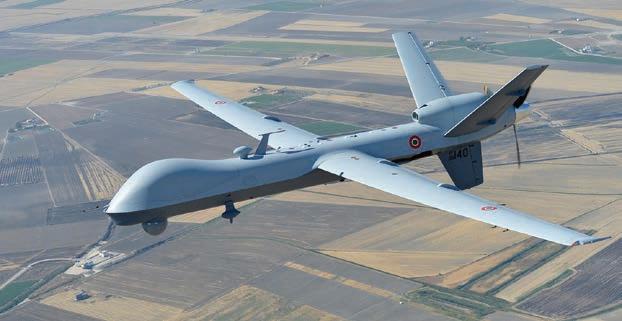
Northrop Grumman has won a contract to provide network, communications, and processing services as part of the Joint All-Domain Command and Control (JADC2) initiative to connect sensors and platforms across all domains for the U.S. Air Force. The U.S. Air Force chose Northrop Grumman to participate in Phase 1 of the Common Tactical Edge Network (CTEN) consortium. Previously, the company had participated in a similar project by connecting what it called “incompatible links and networks” using an open mission systems (OMS)-compliant radio, resilient network controller, machine learning algorithms, and gateway technology. The JADC2 effort is aimed at enhancing defense networks with open architecture communications and networking systems. CTEN’s Phase 1 is intended to enable companies to show how they will leverage digital engineering to build and demonstrate the backbone of a connected battlespace for the U.S. Air Force.
Demand for Earth observation satellites to boost market
The remote sensing satellites market is worth $2.59 billion and continuing to grow due to rising demand for Earth observation, according to a new report from Research and Markets. The report authors state that the market will grow at a compound annual growth rate (CAGR) of 4.7% over the next five years. Boosting the market for remote sensing satellites will be the world situation, say the study authors: Regional conflicts, rapid deployment, and flexible response impose a heavy burden on military commanders, staff, and supporting systems to keep abreast with the situation on the ground in many areas.
In addition, say the study authors, Geographic Information Systems (GIS) enables military land and facilities managers to reduce base operation and maintenance costs, improve mission effectiveness, provide rapid modeling capabilities for analyzing alternative strategies, enhance communication, and store institutional knowledge for additional operations.

L3Harris Technologies wins F-16 EW contract
L3Harris Technologies has won a contract from Lockheed Martin to buy long-lead material for the Viper Shield electronic warfare (EW) system, according to an L3Harris announcement. The AN/ALQ-254(V)1 Viper Shield is the baseline EW system for the F-16 Block 70/72 aircraft, with the contract intended to support production for the global F-16 fleet. The announcement details that the contract, in conjunction with a future full-rate contract award for Viper Shield ship sets, will enable planned production EW capability deliveries for customers worldwide. Viper Shield – which completed the critical design review milestone with Lock-heed Martin and the U.S. Air Force in late 2022 – has demonstrated interoperability with the APG-83 Active Electronically Scanned Array (AESA) radar.
GA-ASI, Conflux sign 3D printing agreement
General Atomics Aeronautical Systems Inc. (GA-ASI) has signed a memorandum of understanding (MOU) with long-time Australian industry partner Conflux to assist with additive manufacturing on its uncrewed aircraft system production line, according to a statement from GA-ASI. Additive manufacturing, or 3D printing, constructs a three-dimensional object from a CAD model or a digital 3D model. Under the terms of the MOU, GA-ASI and Conflux will continue to collaborate on building a flightqualified fuel oil heat exchanger for UAS systems. This heat exchanger will be used by multiple GA-ASI production lines. Conflux produces thermal-management systems – with a focus on additive manufacturing – for heat-exchanger applications. The heat-exchanger part is used in vehicles to transfer heat between the source and a working fluid in order to control the heating and the cooling of a system.
Figure 6 | General Atomics image.
Figure 5 | Northrop Grumman image.
DEFENSE TECH WIRE Continued 12 March 2023 MILITARY EMBEDDED SYSTEMS www.militaryembedded.com
Rising spending to drive global radar market surge
Rising defense budgets around the globe will fuel a rapid increase in the global surveillance radar system market in the coming years, a new report predicts. The report, from Spherical Insights, states that the radar market is expected to grow from $32.4 billion in 2021 to $47.9 billion by 2030 for a compound annual growth rate (CAGR) of 4.9%.
Companies expected to lead the global radar market over this period will be BAE Systems, General Dynamics, Honeywell International, Lockheed Martin, L3 Technologies, Northrop Grumman, Rockwell Collins, Saab, and Thales Group, the study authors say. According to the report, it was found that military radar system producers are focused on striking a balance between quality and price while installing retrofit solutions to upgrade the existing solutions to the latest standards, following the realization that governments want technically effective as well as cost-effective defense solutions.
Sea-Based X-Band Radar getting repairs, upgrades
The U.S. Missile Defense Agency (MDA) Sea-Based X-Band Radar (SBX-1) has finished a record-long 662-day-long voyage in the Pacific Ocean and is now in Hawaii to get repairs and upgrades. The 280-foot-tall SBX-1 radar, which is installed on the top of a converted oil rig, is part of a larger missile-defense system that includes satellites and radars in Japan, Alaska, and California that work together to track missiles in the Pacific.


Most radars of its kind are stationary, but the unique platform of the SBX allows it to operate from anywhere in the ocean, using its own propulsion system to move. SBX-1 Product Manager Bob Dees, a former Navy sailor who now works for the MDA overseeing the radar, said that the radar has continuously been upgraded with an eye toward supporting present and future operations.
Cybersecurity project from DoD moves to next phase
The U.S. Department of Defense (DoD) Defense Information Systems Agency (DISA) reported that its “Thunderdome” cybersecurity and network architecture project hit its initial criteria for success and will be moving on to the next phase. DISA initially awarded the $6.8 million zerotrust prototype project as an Other Transaction Authority (OTA) to Booz Allen Hamilton in January 2022.
At the time of the initial award, DISA deputy director Chris Barnhurst described Thunderdome as a major change in the DoD approach to cyber assets that shifts the usual “classic network-centric defense-in-depth security model to one centered on the protection of data and will ultimately provide the department with a more secure operating environment through the adoption of zerotrust principles.”
AI-enabled software tests autonomous navigation
Artificial intelligence/machine learning (AI/ML) engineering company Scientific Systems Company, Inc. (SSCI) paired up with MIT Sea Grant to demonstrate AI for unmanned surface vehicles (USVs)using the Navy’s Unmanned MaritimeAutonomy Architecture (UMAA). According to the SSCI account, the joint SSCI/MIT software combined computer vision, waypoint navigation, obstacle avoidance, vehicle control, and mission management into a fully integrated and orchestrated autonomy stack, which the team demonstrated on the Charles River (Massachusetts) in October 2022 using MIT’s fully autonomous Boston Whaler boat. These new capabilities, say SSCI officials, are important for the Navy’s UMAA, an initiative described as aiming “to promote the development of common, modular, and scalable software for Unmanned Maritime Vehicles (UMVs)” and reduce costs for acquisition programs and accelerate the fielding of autonomous systems. MIT Sea Grant is a U.S. government-assisted program within MIT’s mechanical engineering department that focuses on ocean engineering.
Figure 8 | Image courtesy MIT Marine Autonomy Lab.
Figure 7 | The Sea-Based, X-band Radar (SBX 1) transits the waters of Joint Base Pearl Harbor-Hickam. U.S. Navy photo/Mass Communication Specialist 2nd Class Daniel Barker.
www.militaryembedded.com MILITARY EMBEDDED SYSTEMS March 2023 13
By Flavia Camargos-Pereira, Contributing Editor
The lower cost of conducting ISR [intelligence, surveillance, and reconnaissance] and attack operations with uncrewed aerial systems (UASs) has been changing the warfare scenario. Cutting-edge technologies and advanced ammunition in a layered approach can provide more effective means to detect, track, classify, and engage this type of aerial target.

How innovative technologies and a layered approach can make C-UAS solutions more effective
Counter-UAS technology SPECIAL REPORT 14 March 2023 MILITARY EMBEDDED SYSTEMS www.militaryembedded.com
U.S. Marine Corps personnel transmit an electronic signal to an incoming drone with the Light Marine Air Defense Integrated System (L-MADIS) at Marine Corps Outlying Landing Field Atlantic (North Carolina). The L-MADIS is an electronic-attack system that counters unmanned aircraft systems via nonkinetic capabilities to destroy or negate aerial threats. U.S. Marine Corps photo by Sgt. Servante R. Coba.
Facing uncrewed aerial threats has been a concern for the U.S. Department of Defense (DoD), so its branches and agencies currently conduct several acquisition and development programs in the area. In fiscal year 2023, the DoD has allocated nearly $750 million for the procurement of solutions and counterdrone research and development.
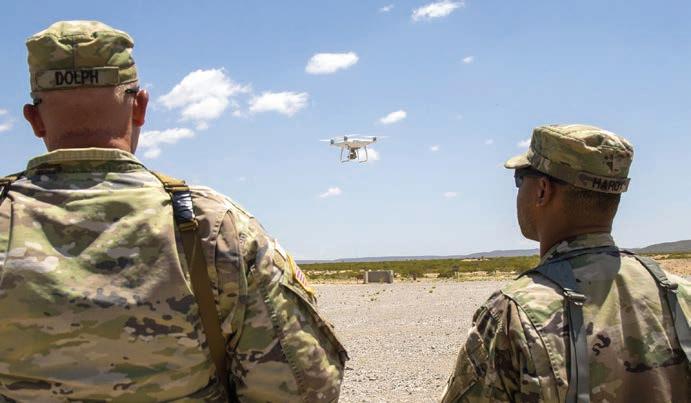
There remains plenty of potential for growth in the domain of counter unmanned aerial systems (C-UASs).
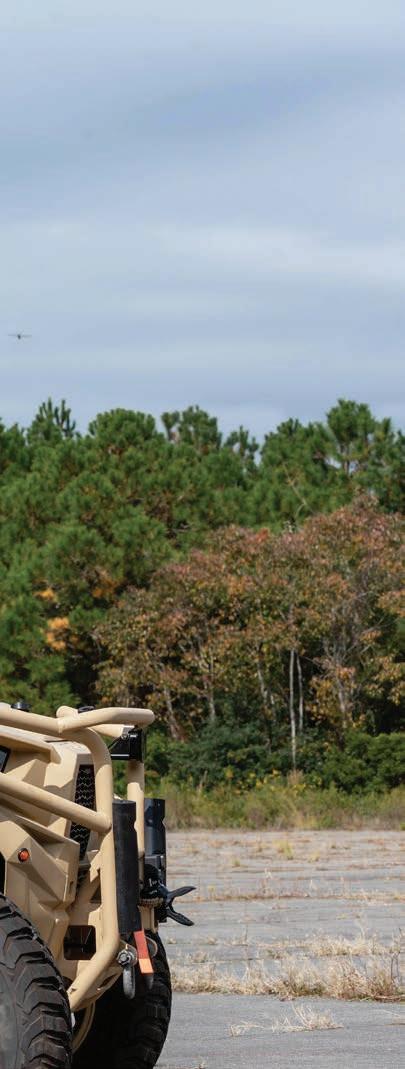
It remains, for instance, difficult to locate, identify, and disrupt Class I (small) and Class II (medium) UASs due to their size, relatively quiet and quick maneuverability, and almost nonexistent heat and noise signatures. The ability to swarm multiple UASs also adds to the difficulty of countering the overall aerial unmanned threat. (Figure 1.)
Reduced-size UASs are small enough to elude detection by standard early-warning sensor systems, explains Rob Menti, air defense strategy, Northrop Grumman (Falls Church, Virginia). “Group I and II unmanned aerial systems may not have the range or payload capacity of larger, advanced systems, but they can impact operations at the tactical level in very serious ways.”
Ryan Hurt, chief revenue officer for Liteye Systems (Centennial, Colorado), points out that the industry has been focusing on solving issues related to detection and classification such as combining different active and passive systems to operate as a single system, getting higher-fidelity detection capability by using multiple sensors, and automatically identifying targets with high confidence.
Another area with opportunities for upgrades comprises the widespread use of machine learning (ML) and artificial intelligence (AI) software. It can provide a better classification of the objects that have been detected and high-fidelity tracking of where targets are.
Hurt notes that identification friend or foe (IFF) technologies have been using the AI/ ML approach to identify adversaries, adding that “we are going to see a lot of it in the future in the area of improvement around AI software classification.”
From Menti’s perspective, ML and AI help reduce the cognitive load on the operator and quickly closes the kill chain. “This process is critical because, at the tactical level, multidomain force protection – the ability to identify and defeat threats on land and air or on water – is paramount as the number of threats can quickly overcome the effectors available.”
Systems design
Both kinetic and nonkinetic solutions can be deployed to defeat UASs and can be grouped into two categories: Some systems mitigate drones (that is, repel or intercept the UAS), while others actually counter or disable them. The main design difference between them? The level of precision.
www.militaryembedded.com MILITARY EMBEDDED SYSTEMS March 2023 15
Figure 1 | The reduced size of Class I and II unmanned aerial systems makes them harder to be detected and located. Soldiers from the 5th Armored Brigade, First Army Division West, test the capabilities of small off-the-shelf unmanned aerial surveillance vehicles at McGregor Range Complex in New Mexico. U.S. Army photo by Staff Sgt. Timothy Gray.
“If you just want to mitigate an area, you really don’t need as much fidelity on exactly where that thing is. You send out a [signal] on that frequency all the way around you. Wherever that thing is, it’s going to be jammed and denied. Whereas if you want to defeat it, then you need to have a better level of fidelity on exactly where it is, and it will then determine what type of mitigation or defeat you can apply to it,” Hurt explains.
In this sense, several types of technology can be used to detect the presence of hostile or unauthorized UASs. Some UASs operate in the radio frequency (RF) spectrum to communicate with their operators and can be located by RF sensors. Some radars, meanwhile, can find those that use GPS but have issues tracking small aerial vehicles.
Other options include the use of electro-optical and infrared (EO/IR) sensors as well as cameras to provide visual identification and microphones to detect acoustic signatures.
“Radar track augmentation using additional sensors is absolutely [one of the] latest improvements, both on the Liteye side, but also within the industry,” Hurt explains.
As far as nonkinetic solutions, GPS spoofers can interfere with the UAS’s navigation sensors and change their trajectory, while RF jammers can mask the controller signal and force the UAS to land or return to its operator position, which would show the enemy’s location.
High-power microwave (HPM) systems are also proving themselves up to the task of engaging this type of threat by generating electromagnetic pulses (EMP) capable of disrupting the UAS. High-energy lasers also use EMPs to damage or destroy the structure of the aircraft.
In the case of kinetic solutions, several types of weapons systems and ammunition can be deployed to engage UASs: Depending on the size of the target, options include conventional and advanced rounds, cannons, chain guns, and even missiles and rockets.
Hurt states that “there is a lot of work being done on the defeating side, in maturing the kinetic part, across the industry.”
Menti stresses that advanced ammunition can give an operational boost to C-UAS systems, as such an advanced system features electronic components onboard that give the round improved functionality. “Several types of advanced ammunition let the user program the warhead to initiate specific functions such as point detonate on a target, penetrate into the target then detonate, or proximity airburst when it sees a target.”
Northrop Grumman’s future C-UAS capability combines airbursting and proximity functions with the ability to course-correct. The C-UAS is designed to provide operational and tactical benefits such as range extension and the ability to guide the round upwards without dispersion error.
“In certain threat instances such as a UAS swarm, you can engage targets and move to the next ones before you have defeated your previous target, knowing that your guided round is going to be a one-shot, one-kill with that target. That makes it easier to defeat drone swarms,” Menti states.
Networked approach
The best way to protect troops, equipment, and infrastructure from hostile UASs may involve a layered approach combining several EO/IR sensors and video technologies alongside capable command-and-control (C2) software in order to provide defensive options across the full area of conflict.
In these cases, the deployment of AI and ML solutions can make the process more effective, as the AI can collect and analyze the data generated by all of those systems and inform users of the best way to counter UASs. In addition to providing more reliable information, it also accelerates the decision-making.
“We take radar, visual, and RF spectrum data, put that data together to provide a very high-fidelity track of what a threat might be out there, and then decide what to do with it from there,” Hurt explains.
Menti notes that, for countering unmanned systems, users need to identify which systems “are available to best defeat different size air, land, and surface water threats at the ranges within the capabilities of our effectors.”
This integrated, networked concept can be effective against Class I UASs and may also be used in cases of swarm attacks in high-intensity conflict scenarios under attack by various threats.
From Hurt’s perspective, “in the Ukraine war or really any place where you got something that you are trying to protect, the approach of having a layered defense is exactly the direction needed.”
The Liteye SHIELD is a multidomain, multimission protection system that combines several sensors by using a networked method to counter Classes I, II, and III UASs. It features Spyglass 3D radar, AI-based RF detection, AI target prioritization, and automated video tracking. (Figure 2.)
SHIELD uses a man-on-the-loop local C2, which requires a low level of personnel power to operate any system from any console with a distributed common operation picture. It can also be customized in diverse mission platforms (fixed/ semi-fixed, light vehicle-/man-portable, mobile, and uncrewed robotic vehicles).
“It is really a state-of-the-art system and is one of the leading capabilities out there. We are on the cutting edge in a lot of cases for the range that would be operationally significant for countering
SPECIAL REPORT Counter-UAS technology 16 March 2023 MILITARY EMBEDDED SYSTEMS www.militaryembedded.com
small UASs. We have concentrated on our ability to put different effects on target,” Hurt states.


Northrop Grumman also provides C-UAS solutions based on a layered approach. The company combines the Mobile, Acquisition, Cueing and Effector System (M-ACE); Bushmaster chain guns; and advanced ammunition to defeat UASs. (Figure 3.)

M-ACE is a modular, on-the-move C-UAS solution that can fit onto a variety of vehicle platforms, uses an open archi-



SEA-23010 Military Embedded Systems Half Page F.pdf 1 2/13/23 9:02 AM
www.militaryembedded.com MILITARY EMBEDDED SYSTEMS March 2023 17
Figure 2 | Liteye SHIELD is a multidomain, multimission protection system that combines several sensors and uses a networked method to counter UASs. Image courtesy Liteye.
A standard gun truck, which is primarily armed with an M230 Link Fed 30 mm weapon system, can operate as part of a networked solution for C2, as well as with the M-ACE systems C2 capability. A standard vehicle can also be integrated with multiple weapons stations from diverse providers.

Northrop Grumman C-UAS systems also feature airbursting ammunition and proximity-fuzed ammunition when needed to defeat Classes I and II UASs.
“The ability to burst a round at a specific point is much more effective than having to directly impact [point detonate] on a small target,” Menti says.
Improvements going forward
As the UAS threat constantly evolves, the technology to engage those evergrowing threats must be more sophisticated. In order to meet the demands of military customers, the industry is constantly working on improving its systems

by adding new capabilities, evaluating the use of new technologies, and developing new sensors and effectors.
“Being able to keep up with innovation is something that affects the defense-industrial base. No longer we are in a ‘long development cycle’ type of environment and market. Companies must be able to move quickly, adapt to new technologies, incorporate new technologies, and create capable systems,” Hurt states. MES
OpenSystems Media works with industry leaders to develop and publish content that educates our readers.
Enabling the Migration to Software-Defined Platforms for Critical Infrastructure
 By Paul Parkinson, Director, Field Engineering, Aerospace & Defense, EMEA, Wind River
By Paul Parkinson, Director, Field Engineering, Aerospace & Defense, EMEA, Wind River
There is a growing need across multiple sectors for devices to be able to support the greater intelligence required to transition from automated to autonomous systems. This is driving technical requirements for open standards – based software-defined architectures to enable consolidation of multiple applications onto common computing platforms. In this white paper, learn how this approach enables application migration, portability, and interoperability, to avoid being locked into proprietary architectures.
Read
SPECIAL REPORT Counter-UAS technology 18 March 2023 MILITARY EMBEDDED SYSTEMS www.militaryembedded.com
Figure 3 | The Northrop Grumman M-ACE [Mobile, Acquisition, Cueing and Effector System) and gun truck can provide defense against Class I and II unmanned aerial systems. Photo courtesy Northrop Grumman.
Read more white papers: https://militaryembedded.com/whitepapers
this white paper at https://bit.ly/41YGJDm

SERVING CRITICAL DEFENSE PROGRAMS FOR OVER 30 YEARS lcrembeddedsystems.com | (800) 747-5972 VPX and SOSA™ aligned payloads that advance the mission Rugged Solutions Ready for What Lies Ahead Conduction cooled ATR systems and chassis with air or liquid enhancement are engineered for rugged reliability and high thermal performance. Work with our experienced team to help ensure mission success. ™ MEMBER
The fresh maintenance and sustainment challenges as UAVs take off in defense
 By Matt Medley
By Matt Medley
The use of unmanned systems in defense is increasing: With the intricacy and operational complexity of unmanned aerial vehicles (UAVs) growing even as footprints shrink, support and sustainment for these assets are becoming high priorities. Supporting software must link data throughout the processes of stakeholders of OEMs, defense forces, and defense contractors before manufacturers can realize the full possibilities of unmanned vehicles, both large and small.
In comparison to the commercial aviation sector in which unmanned aerial vehicles (UAVs) are viewed as emerging pieces of equipment and regulatory barriers must still be passed, the defense sector has been using autonomous vehicles for some time, with constant developments and improvements in complexity and operational ability.
In military-frontline operations, UAVs and drones are already being utilized, differing in size, but still playing pivotal operational roles – from small handheld surveillance drones to extensive remotecontrolled UAVs with increased capacity for payloads. The next generation of UAVs is ahead of us, with work starting on autonomously operated air vehicles
including complex projects like the Boeing Loyal Wingman. Such advanced aircraft will be capable of performing autonomous missions with help from artificial intelligence (AI) or the ability to fly in conjunction with manned aircraft.
This second example of the next generation of military UAVs is known as
A U.S. Air Force MQ-9 Reaper sits on the runway at Al Dhafra Air Base, UAE. U.S. Air Force photo by Tech. Sgt. Chris Jacobs.
Counter-UAS technology SPECIAL REPORT 20 March 2023 MILITARY EMBEDDED SYSTEMS www.militaryembedded.com
manned-unmanned teaming (MUM-T), which comprises autonomous aircraft cooperating with manned assets, with each aircraft performing its own specific mission. MUM-T is defined by the U.S. Army Aviation Center as “The cooperative employment of unmanned assets with traditional manned platforms, providing the unique capabilities of each system to be leveraged for the same mission. The primary benefit of this employment concept is to transmit live intelligence captured from the unmanned system to the manned asset, providing the manned operator with improved situational awareness without placing them at risk.”
UAVs and reduced SWaP
As well as removing human soldiers from harm, autonomous unmanned systems also bring about other important operational advantages. For instance, since UAVs are unencumbered by lifesupport systems such as breathing apparatus and ejection seats, they can carry larger payloads with sensors for improved intelligence and reconnaissance, carry more fuel, or shrink their footprint altogether. As defense forces move to a more distributed operational model to counter wide-reaching threats, there are budget and logistics benefits to be gained as well.
Expendable UAVs, such as the Europeanproduced Black Hornet microdrones, will have a much lower price point than the more advanced systems. These are very small, 16 cm in length and with a mass of only 32 g and are designed to fly within feet of enemy soldiers and enter buildings to spy on positions without being detected – and come with a price tag of around $10,000 per unit. (Figure 1.)

Unmanned systems, whatever their size and role, open up many new deployment options. Fully autonomous equipment has the ability to return to base for reuse after each mission, and the locations of these bases can be more dispersed to address a changing threat environment. Such a situation could include setting up rugged, dispersed forward-operating bases, in some cases using rough runways that would be too unsafe for manned landing.
Mission success with a smaller logistics footprint
These widened deployment options are completely in line with the U.S. Air Force Agile Combat Employment initiative that states its aim to “reduce the number of Airmen in harm’s way in austere environments.” Consider the maintenance sustainment associated with the MQ-9 Reaper – known to be a very powerful weapons-carrying option – a UAV capable of remotely controlled or autonomous flight operations.
A fully operational MQ-9 Reaper system comprises a sensor/weapon-equipped

www.militaryembedded.com MILITARY EMBEDDED SYSTEMS March 2023 21
Figure 1 | A Black Hornet nano-helicopter unmanned aerial vehicle (UAV) can provide troops on the ground with vital situational awareness. The Black Hornet – equipped with a tiny camera enabling reliable full-motion video and still images – can be used to peer around corners or over walls and other obstacles to identify hidden dangers, with the resulting images displayed on a handheld terminal. FLIR photo.
aircraft, ground-control station, Predator Primary Satellite Link, and spare equipment along with operations and maintenance crews for deployed 24-hour missions. The basic crew of two personnel consists of a rated pilot to control the aircraft and command the mission, plus an enlisted aircrew member to operate sensors and guide weapons. Furthermore, the remotely piloted aircraft can be disassembled and loaded into a single container for deployment worldwide. Fewer personnel needed, smaller footprint.
Logistics, sustainment, and support in the spotlight
Autonomous systems will only continue to mature and become even more important to a modern fighting force. The inevitable result is that sustainment, support, and maintenance become key considerations to keep these assets available throughout their life cycle – wherever they’re deployed.
Maintenance support must ensure services are provided for optimal performance of the autonomous platforms, payloads, and related components throughout the asset’s life cycle. A quick look through recent unmanned systems’ RFPs and SOWs from various military forces shows the complexity of UAV logistics and sustainment activities.
The requirements are many and wide-ranging. Actions may include, but are not limited to:
› Ongoing support issues: life cycle sustainment, supply support, depot-level support.
› Repair and maintenance issues: repair and refurbishment; alteration installation; logistics and sustainment analyses; maintenance planning, management, and services; packaging, handling, and storage; and transportation.
› Training and obsolescence management: maintenance training and support, obsolescence management, Diminishing Manufacturing Sources and Material Shortages (DMSMS) support, inventory and spares management.
A consistent digital backbone must underpin the UAV life cycle

Whether these UAVs are supported and maintained by the OEMs, third-party defense contractors, or defense forces themselves, a next-generation military asset requires next-generation software to manage maintenance throughout its life cycle. There needs to be an end-to-end digital thread to link all data sources and stakeholders in the military UAV ecosystem. This means UAV system design, manufacturing, supply chain, and aftermarket services need a digital backbone capable to support sustainment now and into the future.
From that long list of requirements around UAV maintenance and support, it’s clear that breadth of functionality will be a key component – and this breadth needs to be reflected in supporting software as well. Data collection, analysis, and execution will be vital to ensure the readiness of UAVs. Much of this can be achieved with the right underlying software support to ensure the right tasks are assigned at the right time for every UAV – for planned instances, but also during unplanned scenarios using advanced data analytics and forecasting.
Accelerating cybersecurity
Cyberattack susceptibility has been heightened as new remote and autonomous resources come online, which means that essential background software has to meet stringent security requirements in UAV RFPs and SOWs. It is of paramount importance that every information system is operational, secure, and able to guarantee information assurance is defined and valid in order to have the ability to identify, report, and resolve security infringements.
Maintenance support must ensure services are provided for optimal performance of the autonomous platforms, payloads, and related components throughout the asset’s life cycle.
From start to finish in the UAV life cycle, security should be at the forefront with hazards and dangers being immediately flagged throughout all stages of the software development life cycle. Only then will maintenance and support software strategically enable information assurance and cybersecurity.
As UAVs see more operational action than ever before, with wider deployment options and manned/unmanned teaming, designers and users must realize that military UAVs require the same level of innovative logistical and sustainment solutions to maintain operational agility and asset readiness. MES
Matt Medley is senior product manager at IFS, ensuring that solutions meet the demanding needs of defense service and support organizations, defense manufacturers, and defense operators. He has served as a consultant, program manager, and project manager in aerospace and defense organizations. Matt – a graduate of the U.S. Air Force Academy and a certified flight instructor – served for 12 years in the U.S. Air Force, achieving the rank of major and logging 2,500 flight hours in the C-130 aircraft. He holds an MBA from Kennesaw State University and a master’s degree from Webster University and is a certified projectmanagement professional.
IFS • https://www.ifs.com/
SPECIAL REPORT Counter-UAS technology 22 March 2023 MILITARY EMBEDDED SYSTEMS www.militaryembedded.com
MISSION SUCCESS EMBED
Made-in-USA Quality and Performance
Whether your mission involves—air, space, ground or subsea—WINSYSTEMS’ rugged highly reliable embedded computer systems are designed to support your critical mission needs.
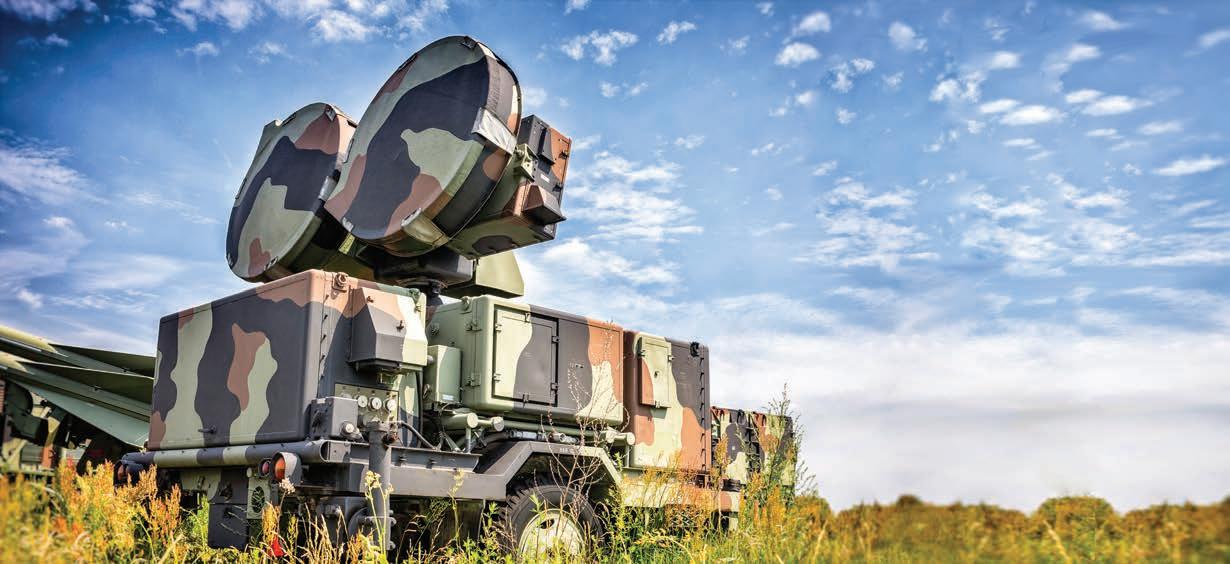
Need help in choosing the right solution? Let WINSYSTEMS assist you in selecting the optimal embedded computing solution that aligns with your application requirements, leaving you more time to focus on system features and delivery.
WINSYSTEMS’ Made-in-USA products deliver the quality, security and performance you need to embed success in every product.
Tiny Pico-ITX SBC: ITX-P-C444
Low power industrial-rated SBC with NXP® i.MX 8M series processor, on-board discrete TPM 2.0 hardware security, dual Ethernet, industrial connectors and I/O
COM Express Solutions: Type 10 Mini and Type 6
Compact Modules
Rugged highly reliable COM modules with Intel ® Atom ® E3900 and i3, i5, i7 processors with on-board discrete TPM 2.0 hardware security
PC/104 -Plus SBC: PPM-C407


Low power industrial-rated SBC with Intel ® Atom ® E3800 series processor, Gigabit Ethernet

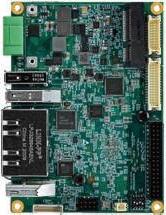
817-274-7553 | www.winsystems.com 2890 112th Street, Grand Prairie, Texas 75050 ASK ABOUT OUR PRODUCT EVALUATION! Single Board Computers | Panel PCs | COM Express Modules | COM Carrier Boards | I/O Modules | Power Supplies WINSYSTEMS
is
a Member of the Intel ® IoT Solutions Alliance. A global ecosystem of more than 800 industry leaders, the Alliance offers its Members unique access to Intel ® technology, expertise, and go-to-market support—accelerating deployment of best-in-class solutions.
MIL TECH TRENDS
AI, open standards to play key role in future SWaP designs for UAS payloads
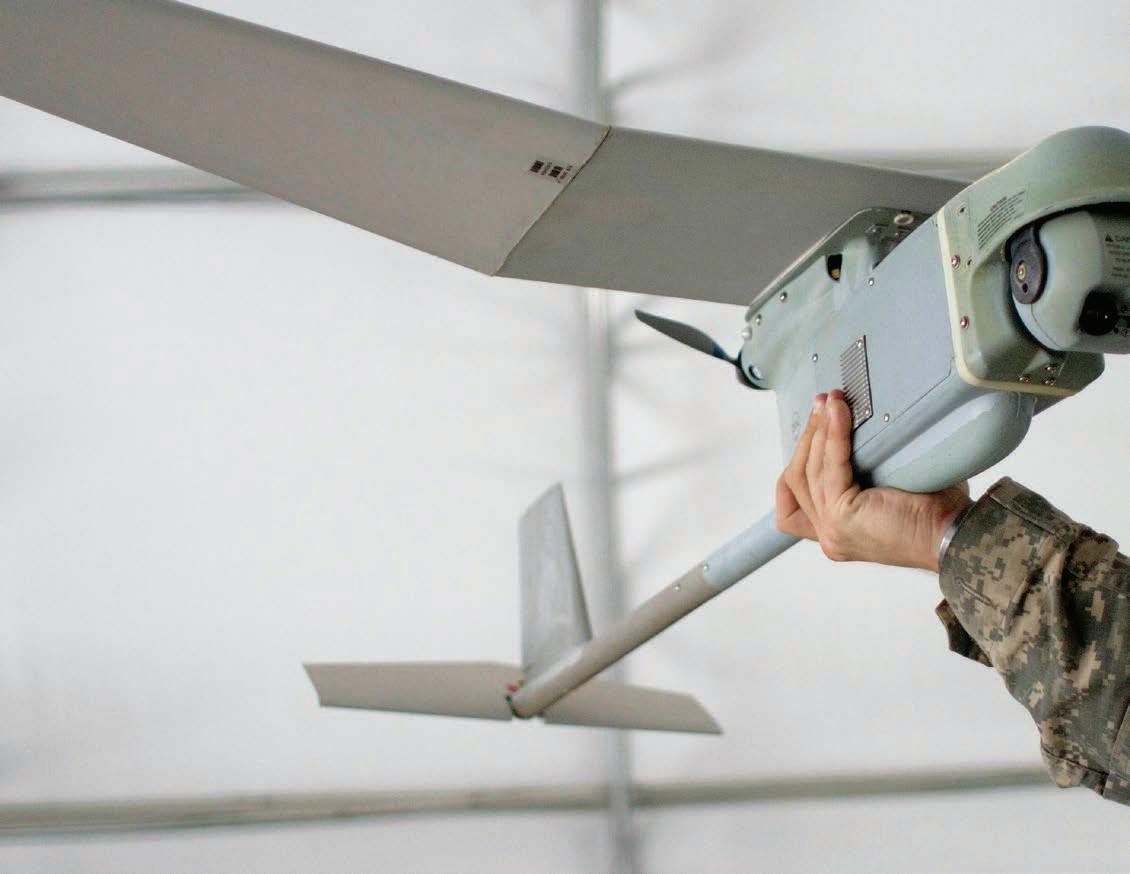 By Dan Taylor
By Dan Taylor
The uncrewed aerial system (UAS) industry faces constant pressure to reduce the size, weight, and power (SWaP) requirements for the payloads they carry. Those pressures often conflict with the mounting data-gathering and bandwidth demands of these systems. Open standards – along with artificial intelligence (AI) and advanced machine learning (ML) technologies – will be key to development in the military UAS arena.
Regardless of whether they operate on the ground, in the air, or at sea, many autonomous system payloads act as sensor platforms for intelligence, surveillance, and reconnaissance (ISR) and other applications. ISR requirements call for more and more capability in the same footprint, placing immense pressure on sensor system designers to reduce the size, weight, and power (SWaP) footprint for the payloads.
Suppliers currently are pushing the limits due to the increased rate of change in the market, as component size and power increases dramatically – meaning increases in heat – which makes it harder
The new configuration of the Raven R-11B small unmanned aircraft system with gimbal payload enables day and night operations and gives the operator a nearly 360-degree view around the aircraft. U.S. Army photo/Sgt. Garett Hernandez.
24 March 2023 MILITARY EMBEDDED SYSTEMS www.militaryembedded.com
Reduced SWaP designs for UAS payloads
to fit everything into a typical 3U form factor, let alone cool them, says Mark Littlefield, senior manager of embedded computing products and system solutions at Elma Electronic (Fremont, California).
Also impacting these designs is the “rapid increases in interboard and system I/O [input/output] communications performance, and the speed of adoption of these high-performance protocols,” he adds. “The density of processing and high-bandwidth pipes between modules is really what is enabling the autonomy.”
Engineers at Omnetics (Minneapolis, Minnesota) – which builds connectors for use on spacecraft and UAS platforms – have seen this trend in the satellite market as well. “You’re getting to the point where you’re looking at putting
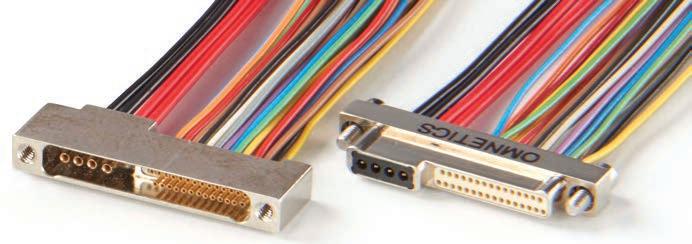

more in a smaller form factor,” says Scott Unzen, the company’s director of marketing and market development. “The ability to do that and meet shock, vibration, and G forces is harder and harder.” (Figure 1.)
When it comes to satellites [and autonomous systems], there has been exponential growth in capabilities such as geopositioning, vision systems, and data transfer. All of this means more data, Unzen says. “The biggest thing they’re looking for is data throughput,” he says.
This demand for data throughput creates challenges must be met by the industry. Dan Mor, director of the video and GPGPU [general-purpose graphics processing units] product line at Aitech Systems (Chatsworth, California), says SWaP constraints require creative solutions to satisfy continually rising data needs.
“Companies must operate within strict constraints when it comes to SWaP, despite the reality of users having a huge amount of data to process due to high-resolution cameras and high-bandwidth raw data,” Mor says.
“This means that we need to find high-performance processing units with low power consumption,” he adds. “The ability to process big amounts of data with a high PPW [performance-per-watt] push is by using a parallel-computing architecture in order to offload calculation from the CPU to [artificial intelligence] and parallel-enabled GPU architecture.”
The primary task for Mor’s team is to ruggedize and cool down high-performance units in a very small envelope and keep them running at full performance, he says. To do this, a company must address all aspects: hardware, software, and mechanical design. that is where open standards come in – the open approach makes it easier for companies to address SWaP in a holistic fashion.
MOSA and SOSA have changed the game
The migration of reduced-SWaP design to open standards as derived from the Modular Open Systems Approach (MOSA) and the Sensor Open Systems Architecture (SOSA) has changed the industry substantially, with companies focusing more on designing products within the context of a defined architecture rather than creating proprietary, closed solutions, Littlefield says.
Ultimately, it is in a supplier’s best interest to follow these standards rather than go the proprietary route, he argues.
“The most successful component suppliers and system integrators are those who embrace the standard and leverage the tools and strengths that it provides,” Littlefield says. “Fighting the standard, or trying to circumvent it, may give a marginal benefit, but is detrimental to overall ease of system integration and makes eventual technology insertions far more difficult. That change in focus from ‘doing things my own
www.militaryembedded.com MILITARY EMBEDDED SYSTEMS March 2023 25
Figure 1 | Examples of two Omnetics Nano-D connectors, which are designed for small-formfactor applications in extreme environments. (Photo courtesy Omnetics.)
way’ to ‘doing things within a defined architecture’ is already having a real impact on our community.”
Littlefield notes that not only has he noticed more requirements for SOSA in payload and control systems, but he has also come across people asking for SOSA alignment, even though they may not actually require it. He adds that SOSA has become a valueadd for customers that results in easier integration and long-term maintenance.
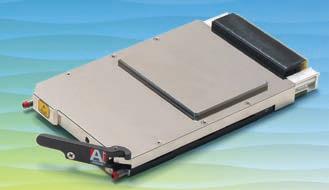
Mor has also noticed a shift toward SOSA conformance in the industry: “SOSA means interoperability, and the ability for the integrator to quickly replace any system board from one vendor to another,” he says. “This interoperability creates tight competition between rugged-boards providers and pushes them to develop competitive advantages to differentiate them from other boards manufacturers.

“It’s becoming a ‘must-have’ for many projects,” he adds.
SOSA isn’t the only source of open standards getting increased attention in an industry focused on improving efficiency and lowering costs in the area of reducedSWaP designs. Littlefield says he has seen interest in integrating safety-critical aspects like ISO 26262 into MOSA and SOSA – although he notes that there is nothing concrete in this area yet.
“It’s clear that people are starting to think about applying SOSA to the problem of vehicle autonomous control, and perhaps even leveraging common computing and sensing resources for both the autonomy and mission-sensing problems,” he says. “It’s early days, though, and it’s not clear if that trend will continue – there are good reasons to keep those two domains separate.”
AI and ML enable reduced SWaP
Open standards are just one part of the equation. To achieve further gains in reducing SWaP, the industry is increasingly turning to artificial intelligence (AI) and machinelearning (ML) technology to help drive more performance despite the reduced power.
With the continuing development of new, advanced threats and growing geopolitical tensions (the war in Ukraine being a prime example), edge computing using AI and communications technologies will gain traction in the market moving forward, Mor asserts.
“Platforms need not only high-performance, SWaP-optimized systems for image and video processing at the edge, but also AI that handles object recognition, classification, and tracking and networking for deterministic communication and real-time decision-making,” he says. (Figure 2.)
The electro-optical sensors and cameras mounted on an uncrewed aerial system (UAS) or ground vehicle can capture real-time footage from the battlefield, enabling warfighters to zoom in on specific areas of interest. From there, SWaP-optimized embedded computing systems using AI edge-computing capabilities could send the video footage to the warfighter, perform the processing and analytics, and then send a decision to the ground-control monitor, Mor says.
Specifically, this AI at the edge could help a warfighter identify an object of interest, classify it, locate it, extract coordinates, and then send those coordinates to a control or remote station. Such tools thereby enable warfighters in the field to make what Mor calls “quick and precise” decisions that are critical on the battlefield. (Figure 3.)
ML is also enabling reduced SWaP; while AI is connected to ML, they describe different things. AI is when a computer is able to learn and problem-solve much like the human
brain, whereas ML is a subset of AI that involves using mathematical models to learn without direct inputs from a human. Basically, ML is a method that AI uses to increase its own intelligence.
ML presents even more opportunities for the industry to increase the utility of reduced-SWaP systems, Littlefield says.
“ML is real, and the community is hungry for products that enable or improve the performance of ML,” he says.
“It’s not so much a case of ML improving SWaP, but more that the kind of hardware that enables ML is now available within the SWaP parameters companies like Elma tend to work with,” Littlefield continues. “For example, a few years ago ML would have taken a 400-watt GPU to operate, which isn’t practical for a VPX-based electronic warfare (EW) or signals-intelligence system deploying a pod off the wing of a UAS. Now, however, there are GPUs and processors that perform ML calculations within the SWaP constraints of a 3U or 6U conductioncooled VPX card.
“Thus we are seeing ML being applied to just about every sensor modality and application domain that our industry serves, and products being fielded to serve those applications,” he adds. MES
Figure 3 | The Aitech U-C5300 SOSA aligned AI graphics board is aimed at use in AI delivery, video analytics, image processing, and other battlefield applications.
MIL TECH TRENDS Reduced SWaP designs for UAS payloads 26 March 2023 MILITARY EMBEDDED SYSTEMS www.militaryembedded.com
Figure 2 | Elma Electronic’s family of highspeed SOSA aligned backplanes are intended to help accelerate development of a common, modular architecture across critical C5ISR and EW systems.
BLUEPRINT FOR
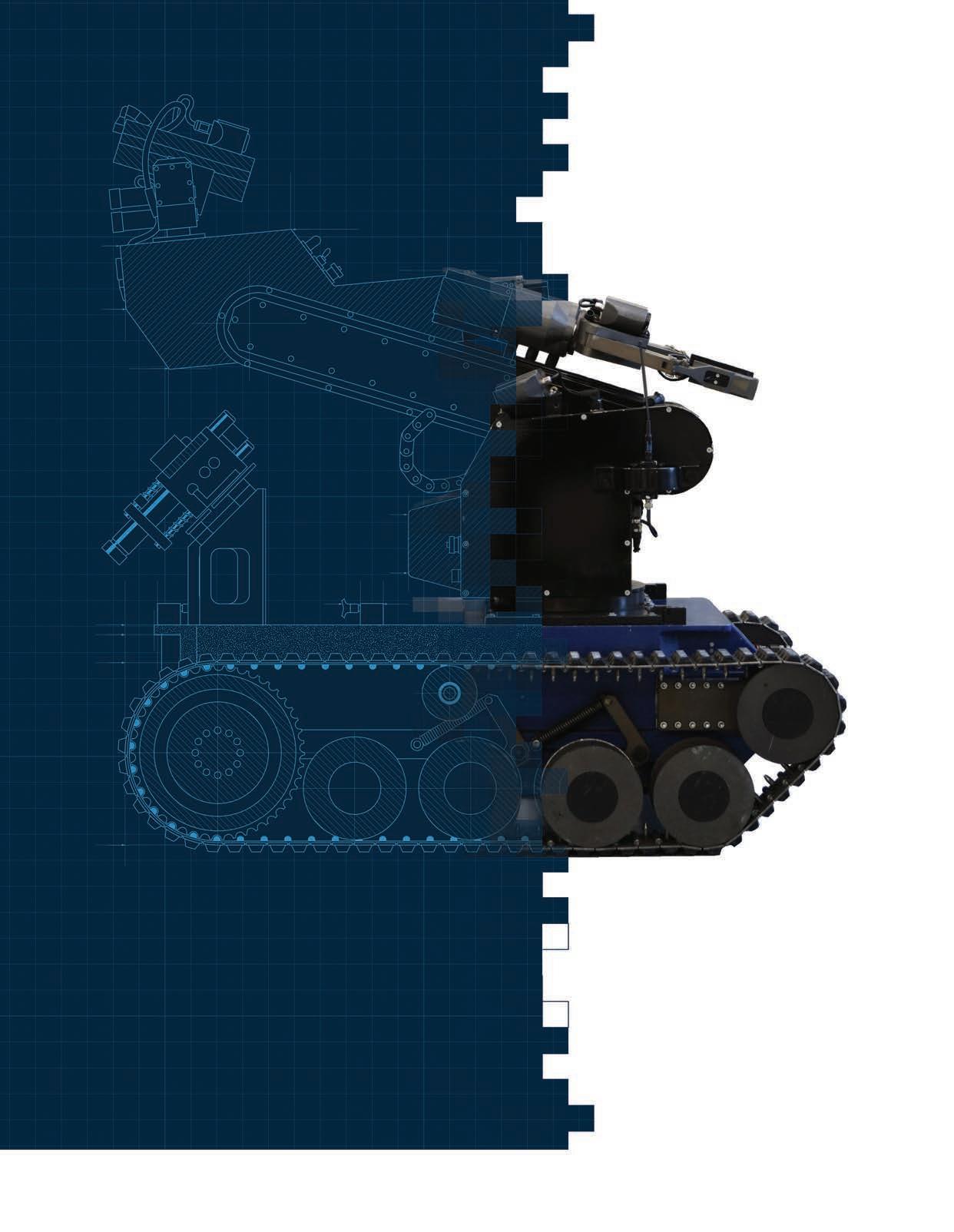
The most critical conversations take place here. From concept to realization. Through discussions on the latest breakthroughs in implementation to an exploration of innovation. Across policy, privacy and data management, safety and security, and emerging technologies. Beyond 5G to edge computing. Your path to our shared autonomous future starts at XPONENTIAL. The world’s only uncrewed systems event unites the entire industry — from end users to regulators — to build concrete plans of action through transparent collaboration.
Plan your way forward. REGISTER NOW. XPONENTIAL.org

MAY 8 – 11, 2023 | EDUCATION MAY 9 – 11, 2023 | EXHIBITS DENVER
Defense industry embraces the benefits of standardized power supplies

 By John Sturm and Matt Renola, Vicor
By John Sturm and Matt Renola, Vicor
As 2023 marches on, we are seeing a growing trend within the aerospace and defense electronics industry toward technology standardization, in particular regarding power-delivery networks. The U.S. Department of Defense (DoD) and prime defense contractors are incentivized to push standardized, modular power systems thanks to their inherent reusability, ability to scale across multiple platforms, and the clear benefits of shorter development time and faster time to revenue.
While this may seem like a well-defined movement, power supplies – until the advent of hardware standards such as MOSA (Modular Open Systems Approach) and SOSA (Sensor Open Systems Architecture) – were largely an afterthought when it came to shifting from highly-customized designs to standard, off-the-shelf solutions.
In an all-too-common scenario, only once the system is specified and the logic and memory subsystems are designed does the question arise: “How are we going to power this thing?” At that point, there are typically very limited options. The engineer is left with a collection of power form factors to design for –some are shaped like half-moons or pentagons while others are accordion-shaped to accommodate flex PC boards. The engineer is then given a mechanical outline and space dimensions and asked, “Can you shoehorn in a power supply?”
The industry has been working like this for decades, absorbing the expense of custom power supplies that must also be reliably cooled – another critical design element that is too often left as a postscript. It’s as if someone built a car first, then considered how to power it.
Vicor has been powering defense applications for years and has learned that the power chain is still often relegated to latestage design, or even retrofitted in some instances. It’s unfortunate, because earlier, serious consideration of the power delivery network can be a strategic advantage once you understand the design benefits of power modules.
That’s a habit we expect to change as the industry continues to embrace alignment with MOSA and SOSA standards. This is a positive trend, because we firmly believe that power should be at the forefront of all design considerations. Not only does it ensure a cleaner, less expensive, more power-efficient design, it guards against obsolescence in an industry where hardware is often expected to be in service for 20 or 30 years. Moreover, having a known power supply early in the design process can help to expedite the recertification process and simplifies logistics and inventory management.
The opportunity to transition to standard, module power systems is opening up in large part due to top-down pressure from the U.S. government. What does this evolution look like? We are seeing custom chassis and backplanes giving way to standardized designs with a consistent form factor across the entire application space, whether for an aircraft or an advanced radar array.
In this situation, the engineer plugs in a single-board computer and other instrumentation cards, and the predictable, pluggable power supply becomes an integral part, complete with specified voltage rails and output power. High-efficiency modules capable of supporting many different V in/V out also enable greater flexibility and the ability to react quickly to design changes.
These power-density advancements will enable more power in the same space for future designs, which is enabling scalability through technology reuse. At Vicor, we appreciate that this long trend line is only possible if design engineers understand and appreciate the benefits of standard, modular power components. It’s a more strategic approach to power that yields faster designs, enhances overall system performance, and mitigates obsolescence. MES
John Sturm is Vice President of Business Development for the Aerospace & Defense business unit at Vicor.
Vicor • https://www.vicorpower.com/ 28 March 2023 MILITARY EMBEDDED SYSTEMS www.militaryembedded.com GUEST BLOG
Matt Renola is Senior Director, Global Business Development – Aerospace, Defense and Satellite business unit at Vicor.

LeagueOwnedandproducedbyNavy oftheUnitedStates Gaylord National Resort and Convention Center #SAS23 www.seaairspace.org APRIL 03–05 Largest Maritime Expo in U.S. Register Now
MIL TECH TRENDS
How data is fast becoming the U.S. Navy’s powerful secret weapon
By Stephen Carlon
In December 2022, as U.S. Naval Forces Central Command (NAVCENT) wrapped up its three-week Digital Horizon training exercise to advance the use of unmanned technologies, the U.S. Navy marked the success of both a highprofile “hero” (artificial intelligence/ AI) as well as a self-effacing, yet no less valuable “secret weapon” – data.
The U.S. Naval Forces Central Command (NAVCENT) Task Force 59 was launched in 2021 to rapidly integrate unmanned systems and emerging technologies into maritime operations. During a high-profile training exercise at the end of 2022, the task force used artificial intelligence (AI) – its headline-grabbing “hero” – to detect potential threats from 15 different advanced systems, 10 of which were operating in the Middle East for the first time.
As NAVCENT tested and operated these unmanned technologies, specifically 12 unmanned surface vessels (USVs) and three unmanned aerial vehicles (UAVs), a more understated yet increasingly mission-critical element was at the heart of the mission’s success.
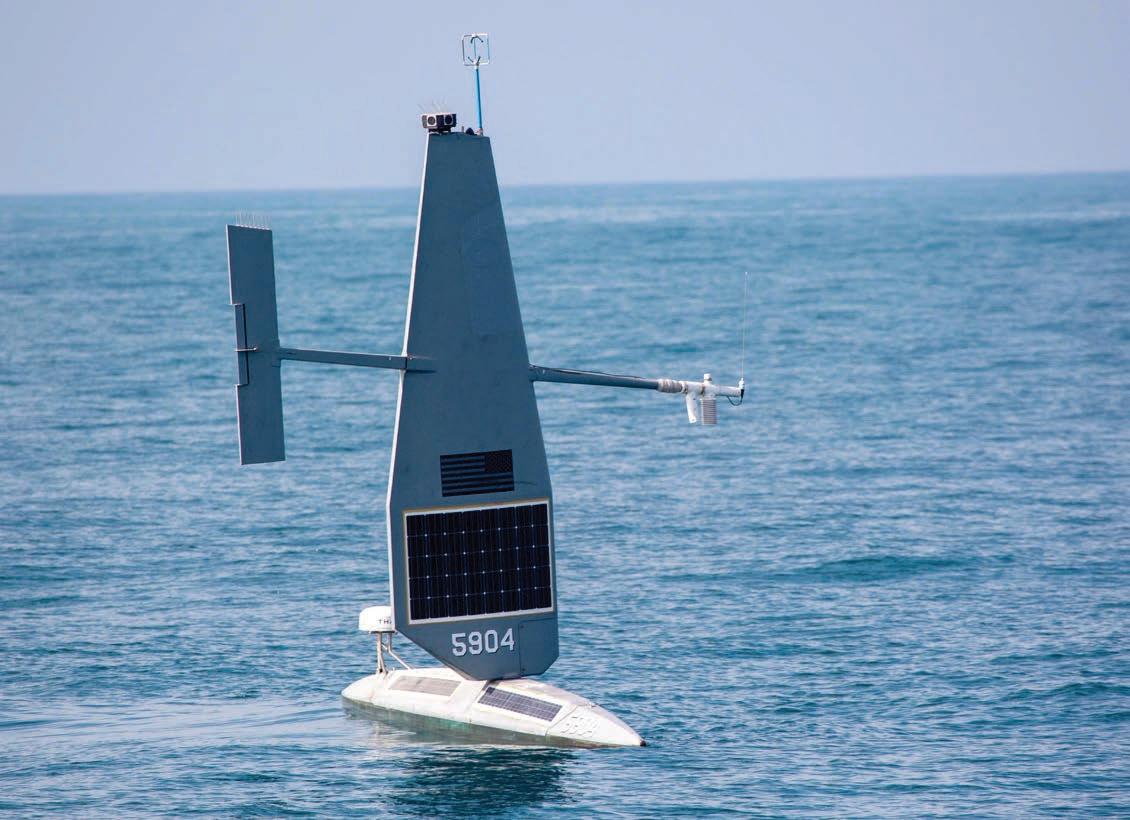
That secret weapon was data. But tapping the full potential of data in the waters of the Persian Gulf was no easy feat.
Reining in the bandwidth hog
USVs are a powerful force multiplier for the Navy: The ocean is vast, and USVs offer the Navy a low-cost means of situational awareness. Each USV continually pumps out streams of data, specifically 20 million pieces of data during the Digital Horizon event alone. Much of the information gleaned, such as location data, uses very little bandwidth.
A Saildrone Explorer unmanned surface vessel operates in the Arabian Gulf during the Digital Horizon exercise during November 2022. The three-week unmanned and artificial intelligence integration event involved employing new platforms in the region for the first time. U.S. Army photo by Sgt. Brandon Murphy.
30 March 2023 MILITARY EMBEDDED SYSTEMS www.militaryembedded.com
Reduced SWaP designs for UAS payloads
On the other hand, video recorded by the USV cameras can unfortunately serve as an obstructive “bandwidth hog” while the equipment can be bulky. The challenge for the Navy during the exercise was how to acquire and transmit enormous quantities of data, video and otherwise, within such a bandwidth- and space-constrained environment.
The exercise called for a centralized data platform for storing and transferring data that maximized the use of available wireless network bandwidth while minimizing the need to integrate a spiderweb of disparate systems.
A centralized data platform from analytics company Novetta called Platform for Integrated C3 and Responsive Defense was used to enable NAVCENT to acquire video in a reduced-bandwidth manner and disseminate it to three distinct systems – a data visualization platform, an AI vendor, and a data lake [a centralized way to store structured and unstructured information in disparate data sets together]. If any of those three systems had attempted to acquire the data individually instead of through this centralized platform, bandwidth issues at the high-stakes training exercise may have threatened mission success.
Standardizing communication
Naval vessels use standardized communication protocols like AIS [Automatic Identification System] to transmit positional and other data, which means that systems can talk directly to each other. However, at present, USVs operate largely in a standardless environment with respect to telemetry and other types of information. In preparing for Digital Horizon, one of NAVCENT’s major questions was how these various USV systems would communicate effectively with one another.
Typically, data-centralization platforms have defined a communication standard that all connected devices need to speak. But if the devices don’t speak that language, it is extremely difficult for traditional platforms to acquire the valuable data, thereby slowing down data processing. During Digital Horizon, the
platform used meant that data didn’t need to be standardized for systems to be interoperable. Adapters interfacing directly with an individual vessel’s particular communication protocol translated messages to an internal common format, and then broadcast these messages to other systems so that disparate messages could be understood by all. This approach represented a significant paradigm flip. (Figure 1.)
By using an open-architecture edge and cloud system that brought DevSecOps principles (which can be defined as the practice of integrating security testing at every stage of the software-development process) to nontraditional operational technologies, specifically Digital Horizon’s USV systems, the platform upended the conventional thinking about how sensors talk to each other. A mesh of standard, nonstandard, and legacy data was all ingested and standardized, a definite change in the way data was handled in the fast-paced simulated mission-critical environment.
Creating a “single pane of glass”
Another major priority at Digital Horizon was to centrally position data, fusing it together in one place so that Navy systems operators weren’t forced to continually shift their focus among multiple screens and adjust to disparate applications. It is not uncommon for naval operators to interface with multiple software packages and industry partners to operate a vessel, which sometimes can hamper the flexibility, agility, and speed of naval operations.
Consolidating onto one common operating picture was not a simple endeavor during the exercise: Data from 15 vessels, 40 video feeds, and nine sources of AIS made integration complex. NAVCENT was able to successfully leverage a web-enabled data visualization platform to display USV data onto a so-called single pane of glass, an approach that presents data from multiple sources in a unified display. The huge screen displayed a map of the unmanned systems, as well as a wealth of data including video feeds and surface detections, making USV command-and-control a seamless and successful endeavor. (Figure 2.)
Ultimately, naval operators during the Digital Horizon exercise were able to directly control five different unmanned vehicles from a single user interface without any intervention from the USV industry partners. At scale, this capability significantly increases speed-to-mission for the vehicles by shortening communications paths and taking advantage of their autonomous navigation.

www.militaryembedded.com MILITARY EMBEDDED SYSTEMS March 2023 31
Figure 1 | A Marine Advanced Robotics WAM-V unmanned surface vessel operates and collects data in the Arabian Gulf during the Digital Horizon exercise in late November 2022. U.S. Army photo by Sgt. Brandon Murphy.
What’s next
Overall, naval operators at Digital Horizon were able to use data to help them better understand:
› The position of the USVs, including information on latitude and longitude, heading, speed, etc.

› The sensing capabilities of the vessels have, including live video feeds and automatic detections of what was seen in the videos.

› Which vessels needed to be investigated by the Navy; in other words, if there were there any active vessels nearby transmitting their positions or radar contacts.
Task Force 59’s exercises at Digital Horizon weren’t only significant for advancing USV operations, but they also underscored a broader imperative – that the flexibility of data platforms to centralize and manage data will be at the heart of maintaining an agile, forward-looking Navy. (Figure 3.)
What’s more, as each branch of the U.S. military – Navy, Air Force, Army, Marine Corps, and Space Force – advances toward a stronger, more unified operational stance with the Joint All-Domain Command and Control (JADC2), innovative and nimble approaches to data aggregation will be necessary to rapidly adopt and scale cutting-edge technologies, enable greater visibility, and ultimately stay ahead of adversaries. MES
Stephen Carlon is Accenture Federal Services’ National Security Portfolio Managing Director, C4ISR Lead. He was embedded with Digital Horizon in the Middle East. AFS was solely responsible for data integration for the 15 different types of unmanned systems participating in the exercise, 10 of which were operating with the 5th Fleet for the first time. He is responsible for the product development and deployment of Novetta Mission Analytics (NMA) and Ageon ISR/ Geospera in support of critical mission systems for National Security and commercial customers in the U.S. and around the world. Mr. Carlon joined Novetta in 2013 as the Director for Special Products in Information Exploitation/ Defense Intelligence, managing the development and delivery of Xift, Dataviser, and InSight across multiple clients. Prior to Novetta, Stephen was a Senior Program Manager of a proprietary web-based project portfolio management system at Métier, Ltd.; earlier in his career, he was the network administrator at the U.S. Embassy in Vienna, Austria and a Software Engineer at Electronic Data Systems. Stephen holds a B.S. in computer science, a minor in mathematics, and a concentration in business management from the University of Oklahoma. He is a certified Project Management Professional (PMP).

Accenture Federal Services
https://www.accenture.com/us-en
Figure 2 | The “single pane of glass” approach used by Task Force 59 during the Digital Horizon exercise. Image courtesy Accenture/Task Force 59.
MIL TECH TRENDS Reduced SWaP designs for UAS payloads 32 March 2023 MILITARY EMBEDDED SYSTEMS www.militaryembedded.com
Figure 3 | An Ocean Aero Triton unmanned surface vessel operates alongside U.S. Coast Guard fast response cutter USCGC Emlen Tunnell (WPC 1145) in the Arabian Gulf during the Digital Horizon exercise during November 2022. U.S. Army photo by Sgt. Brandon Murphy.
NAVIGATE ... THROUGH ALL PARTS OF THE DESIGN PROCESS

TECHNOLOGY, TRENDS, AND PRODUCTS DRIVING THE DESIGN PROCESS




Military Embedded Systems focuses on embedded electronics – hardware and software – for military applications through technical coverage of all parts of the design process. The website, Resource Guide, e-mags, newsletters, podcasts, webcasts, and print editions provide insight on embedded tools and strategies including technology insertion, obsolescence management, standards adoption, and many other military-specific technical subjects.
Coverage areas include the latest innovative products, technology, and market trends driving military embedded applications such as radar, electronic warfare, unmanned systems, cybersecurity, AI and machine learning, avionics, and more. Each issue is full of the information readers need to stay connected to the pulse of embedded technology in the military and aerospace industries.

militaryembedded.com
MIL TECH TRENDS
Lower-SWaP LOS radios help secure battlefields
By Jim Benson, Hiep Truong, and Mike Bontell
The ongoing need for reduced size, weight, and power (SWaP) is driving the development of secure specialized line-ofsight (LOS) radios used on the battlefield. These radios demand increased functionality in smaller packages, even in single-board solutions, used in body-worn equipment, on-field IoT sensors, or wireless sensors on unmanned aerial or ground vehicles.
Communications equipment has evolved as much as any systems designed for the modern electronic battlefield, with the reliability and security of radio links often significantly impacting the success – or failure – of a tactical mission. Communications signals are transmitted and received by systems at sea, aboard aircraft, and even via satellite communications (satcom) links formed with orbiting satellites.
Often, however, the most critical commands or the sharing of intelligence comes by way of short-range terrestrial, line-of-sight (LOS) radio links that must send and receive signals with the confidence that an adversary is not intercepting or jamming those signals. Known as “low probability of interference, low probability of detection” (LPI/LPD) and antijam radios, they are essential in establishing the covert, reliable communications needed to exchange voice, data, and video communications among troops in the field without alerting an adversary to the warfighters’ presence.
Tactical radio equipment operates within crowded spectrum environments where the electromagnetic (EM) signature is closely mapped and monitored

34 March 2023 MILITARY EMBEDDED SYSTEMS www.militaryembedded.com
Reduced SWaP designs for UAS payloads
by wideband receivers such as those found in electronic warfare (EW) and electronic intelligence (ELINT) systems. Omnidirectional (or nondirectional) radio signals are prime candidates for detection since their beams cover wide areas. The U.S. Department of Defense (DoD) has confirmed plans to employ the increasingly extensive capabilities of 5G cellular wireless communications networks on the battlefield. This as-yet-to-be-erected millimeter-wave (mmWave) frequency portion of its infrastructure will provide the generous amounts of spectrum needed for high-speeddata transfers and real-time in-field video streaming (albeit at shorter propagation distances than the longer wavelengths of 5G’s lower frequencies).
Once necessary infrastructure is erected (Fig. 1), tactical use of 5G wireless cellular networks has the many benefits of a full-fledged, multi-function communications network, supporting manned and unmanned interoperations and low-latency communications for mission-critical applications. But 5G communications networks are not secure and can be disrupted by EW and cyberattacks. In addition, for tactical use, 5G networks must be adapted to existing battlefield communications formats, including point-to-point LOS radios and satellite-based communications systems. (Figure 1.)

While its use of mmWave spectrum may be unique on the battlefield, an EW receiver –or even a spectrum analyzer with directional antenna in the signal path – can detect and intercept/record the signals for analysis; in other words, to apply machine learning [ML] algorithms to the development of jamming signals. Jamming signals at mmWave frequencies can be cost-effectively produced through the multiplication of lowerfrequency signals, like those from an RF/microwave signal or function generator).
Pursuing LPI/LPD operation
Secure battlefield communications have long been accomplished by two-way LOS radios. They lack the capacity for almost unlimited number of users of a network like 5G but do not require the large infrastructure of a wireless network. Communications of voice, data, text, or video are accomplished between two points on the battlefield with mobile equipment. Modern LOS radio equipment is compact and efficient enough for a wide range of embedded applications, including in personnel-worn radios, links with in-field Internet of Things (IoT) sensors, and wireless sensors on unmanned aerial systems (UASs) or unmanned ground vehicles (UGVs).
Because two-way LOS radios are fully mobile, the signal path can change at any time, decreasing the probability of detection and interception. LOS radios designed
to meet mobile ad hoc networking (MANET) requirements also provide networking capability among multiple LOS radios when needed, although MANET interoperability must be fail-safe to support reliable battlefield-networking communications. In addition, practical tactical radio solutions should be backwards-compatible to enable interoperability with radio equipment in the field.
The transmit-power levels of portable LOS tactical radios are well-controlled to minimize EM levels that might be detected by an adversary. Of course, limiting transmit power leads to a tradeoff in performance: Higher power levels help overcome propagation attenuation in the signal path from such factors as foliage, high humidity, or reflections from buildings in populated areas. Higher power levels support the highthroughput performance needed for clear voice communications and fast data-transfer rates. But higher power levels are also easier for enemy receivers to detect and track, even if transmit signals result in reflected beams that can be detected. Analysis of the variations in the angles of reflection can lead to identifying the main signal path. At lower transmit-power levels, those reflections may be too low in level to be detected.
The usable communications range of any LOS radio can be determined by its transmit power and its transmit power density which describes how the transmit power is distributed across the channel bandwidth. Radio transmitters with low transmit-power density are ideal since they are difficult to detect, especially in crowded spectrum. Provided the transmit power is sufficient to overcome signalpath losses over a required operating distance to the receiver, low transmitpower density is a desirable characteristic for radios designed for LPI/LPD functionality.
To increase effectiveness in extremely hostile conditions, LPI/LPD radios are designed with high resistance to jamming signals. Often this is achieved through secondary receiver circuitry capable of providing details about the jamming signals for instantaneous
Figure 1 | U.S. Air Force personnel place protection around the inner ducts for the fiber-optic cables connected to a 5G cell tower at Ramstein Air Base in Germany during a 2021 operation. U.S. Air Force photo by Airman Jared Lovett.
www.militaryembedded.com MILITARY EMBEDDED SYSTEMS March 2023 35
development of an antijam algorithm. An antijam algorithm can model a form of inverse LPI/LPD radio waveform for cancellation of any jamming signal components received with the desired carrier signals in the LPI/LPD’s primary receiver stage. Additional antijam techniques include the use of software-defined radio (SDR) architectures to signal the radios in a link to switch to a channel that is not occupied by jamming signals or to employ a frequency-hopping algorithm to move the carrier signal within a total bandwidth that exceeds the limits of the jamming signals.
In a crowded EM spectrum with multiple signals occupying wide and narrow bandwidths, distinctive waveform characteristics can make it easier to identify a radio that has been recently added to the operating environment. For this reason, unit-to-unit consistency of performance is critical for successful LPI/LPD radio operation. Lack of uniformity enables adversaries to focus on a single radio and use its signals for geolocation of a warfighter using feature detectors, for example a signal analyzer or oscilloscope programmed to identify waveforms that fall outside a given feature limit such as larger-than-average amplitude variations.
For extended-range, multiple-user operation, LOS radios require some infrastructure like antennas and towers capable of relaying in-field signals to a base station or control center, but this auxiliary equipment is not on the scale of the large towers and repeaters that comprise wireless cellular communications networks such as 5G systems. In addition, when fully functional, 5G will operate within two portions of frequency spectrum, commonly referred to as the sub-6-GHz frequencies and the mmWave frequencies. LOS battlefield radios take advantage of wide operating bandwidths but restrict signals to narrow portions of RF/microwave frequency spectrum compared to wireless cellular networks. Added infrastructure for LOS radio networks typically includes portable antenna towers and omnidirectional antennas that can be easily transported by troops and erected quickly as needed for networking capabilities (Figure 2).

Sizing up a solution
Modern battlefield communications include many “things” in addition to troops and vehicles, notably IoT sensors. Spread throughout the varying terrain of a battlefield, wireless IoT sensors collect information about battle conditions like temperature and
even the proximity of enemy assets. However, for such data to be useful, it must be communicated to a command center for analysis and distribution to troops in the field, and such communications must be secure to ensure the integrity of the collected data. Secure, wide-channel bandwidths are needed because of the substantial amounts and sensitivity of data to be transferred, both of which can be supported by LPI/LPD radio capability. To meet size, weight, and power (SWaP) goals, low current operation at a low, single-supply voltage enables long running times. This capability is the foundation of in-field embedded LPI/LPD LOS radios capable of maintaining reliable communications between IoT sensors, troops, and/or command centers.
Obviously, an LPI/LPD LOS radio is a complex design with circuitry becoming smaller and denser as designers seek to meet the defense world’s demands for reduced SWaP. The radios blend mixedsignal circuitry with firmware and software to send and receive information while remaining unnoticed by the enemy. But without encrypted signals, frequency hopping, and channel-changing capabilities – just to name a few – enemy EW equipment can listen to those signals as if they were their own. Constructing an effective LPI/LPD LOS radio requires many modules working together to achieve the required functionality, starting with the RF/microwave radio module, which must combine low-power operation with high RF performance in a small module size that enables embedding in portable, lightweight applications for long-term in-field use.
An example of a single-board low-power radio module from Benchmark Secure Technology measures 0.930 by 0.750 by 0.117 inches while securely communicating voice, compressed video, and data rates to 6.8 Mb/sec at distances to 200 m using six frequency bands from 3.5 to 7.0 GHz for frequency agility. The compact module includes a power supply and microprocessor with mesh ad-hoc, multihop networking capability. In environments where access to GPS signals for geolocation is not available,
Figure 2 | Personnel place antennas for LOS battlefield radios during a training session.
Photo credit U.S. Army.
36 March 2023 MILITARY EMBEDDED SYSTEMS www.militaryembedded.com
MIL TECH TRENDS Reduced SWaP designs for UAS payloads
it is capable of two-way mesh-precision ranging with 10 cm accuracy supporting relative position location information (PLI). To support portable, batterypowered operation, the module runs on a single +3.3-VDC power supply. Depending on the channel-center frequency, it operates on instantaneous bandwidths of 500 and 900 MHz with transmit power of -14 dBm and transmit power density of less than -41.3 dBm/MHz. The castellated, selfcontained PCB assembly module is a potential building block for advanced LPI/LPD LOS radios for terrestrial communications but can also be used for two-way radio systems that must operate within less-than-ideal propagation environments, like tunnels or bunkers. (Figure 3.)

These tactical LPI/LPD radios must be designed with extreme flexibility and adaptability to changing enemy capabilities and environmental conditions. Before being ready for in-field use, any LPI/LPD radio design is subjected to extensive system-level simulation, modeling, and testing under certain types of conditions (i.e., jamming and detecting signals) that it is expected to face in the field. Modules must be thoroughly tested for relevant military operational characteristics and meet SWaP requirements. For a battlefield of the future – crowded with signals as well as IoT sensors – it is the possible core of a secure radio link that will remain powered and ready for years in standby/ sleep mode. MES
A graduate of California State University, Jim Benson currently works as a Director of Advanced Technology at Benchmark Electronics. Over the past nine years, Jim and his team have been working with the U.S. Army Research and Development organizations, developing low-power, low-cost solutions for soldierborne body area and squad area data and voice communications. Mike Bontell is an aerospace and defense business development executive at Benchmark and a 20year veteran of the United States Marine Corps, retiring with the rank of lieutenant colonel. Prior to joining Benchmark, Mike was a business leader at BAE Systems, L3Harris, and other defense systems providers. Hiep Truong is a Director of Design Engineering at Benchmark and is currently acting as a chief engineer for a variety of advanced wireless development projects. Prior to Benchmark, Hiep worked on system design and architecture development of wireless/SATCOM/VSAT systems for various military and government systems and commercial products. Hiep earned an MS and BS in electrical engineering from California State University.
Benchmark
www.bench.com/secure-technology
Quality Testing to Meet the Toughest Requirements
With

elma.com Elma Electronic Inc.
Our products are designed, tested and qualified to enable our customers to meet or exceed the most demanding military standards right from the start.
you at every stage!
www.militaryembedded.com MILITARY EMBEDDED SYSTEMS March 2023 37
Figure 3 | Low-SWaP radio modules pack ultrawideband (UWB) transmitter and receiver electronics along with powersupply electronics and a microprocessor. Benchmark Secure Technology photo.
MOSA systems: The benefits of deploying a datacentric architecture
By Andre Odermatt
A Modular Open Systems Approach (MOSA) – the method recommended by the U.S. Department of Defense (DoD) for the implementation of open systems –uses a decoupled system architecture that enables components to be incrementally added, removed, or replaced throughout the life cycle of a platform, providing opportunities for enhanced competition and innovation.

The U.S. Department of Defense (DoD) recognizes the importance of data and considers data as a strategic resource. A datacentric architecture is uniquely able to accomplish this goal because it not only enables systems to be decoupled and independent from each other, but also focuses the systems on the data itself. This approach supports both MOSA [Modular Open Systems Approach] and DoD data strategies. A datacentric architecture makes data the common element for systems to act on and consume, while also producing data that other systems can use such as uncrewed aircraft system (UAS) payloads generating ever increasing amounts of intelligence, surveillance, and reconnaissance (ISR) data.
A datacentric architecture can be achieved by using open standards, which are at the core of MOSA. Current DoD standards, including the Future Airborne Capability Environment (FACE) Technical Standard, already embrace a datacentric architecture by emphasizing the importance of data. For example, the FACE approach encourages the use of a data model and requires FACE Units of Conformance (UoCs) to have a well-defined data model that can provide the structure to communicate through
Implementation of a Modular Open Systems Approach (MOSA) on uncrewed aircraft systems (UASs) are intended to enable multiple new standards for command and control, Future Airborne Capability Environment (FACE), Open Mission Systems (OMS), Universal Armament Interface (UAI), and a vehicle for segregating the flight/mission systems’ hardware and software. Photo courtesy General Atomics Aeronautical Systems, Inc. (GA-ASI).
INDUSTRY SPOTLIGHT 38 March 2023 MILITARY EMBEDDED SYSTEMS www.militaryembedded.com
MOSA solutions for unmanned systems
the Transport Services Segment (TSS) of the FACE architecture.
A datacentric architecture is an excellent use case for a publish-subscribe architecture, based on the open Data Distribution Service (DDS) standard, which also emphasizes the importance of data. Individual systems declare the intent to subscribe to data or advertise the data they have to offer. The publish-subscribe protocol then matches publishers and subscribers with each other and makes sure the data gets to the right place at the right time. New participants can join at runtime without the need for code modifications, enabling rapid updates and technology refreshes using the existing data architecture.

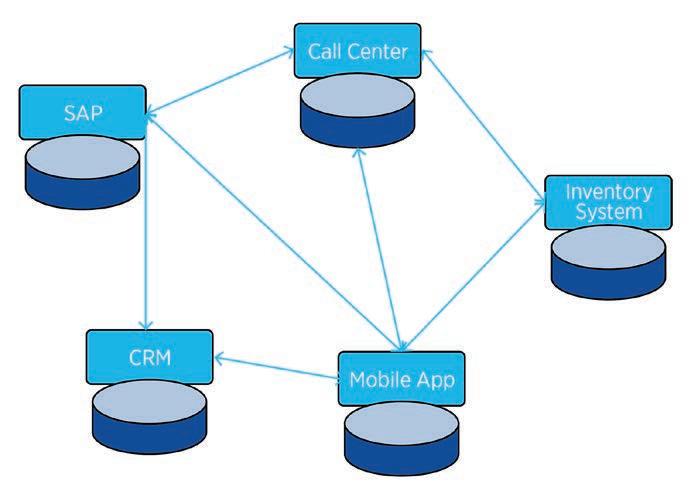
Datacentricity and the system

Most software developers and system architects take an application-focused view on defining systems. They start off with defining the applications which are
needed in a system (e.g., a GUI, processing, and the like). The next step is defining what the interfaces should be, and what is needed by each application. The interfaces keep evolving as new functionality is added and in most cases requires additional information. However, what really matters is the data, not the application; the application is simply a way to display the data of interest. The same data is as important if it is displayed in a different application. For example, revenue numbers can be viewed in Excel, Word, Notepad, Vi, etc. The way the application displays the data may make it easier for the user to understand; however, the data – and not the application – has the key information and not the application. The information is in the data. (Figure 1.)
In contrast, datacentricity puts data at the center of the architecture; in other words, data is the primary asset of the system. (Figure 2.)
Realizing the importance of data, FACE requires a data model which provides a standard method for defining the data format and meaning for information-sharing
Figure 1 | An application-centric approach to a system is shown.
www.militaryembedded.com MILITARY EMBEDDED SYSTEMS March 2023 39
Figure 2 | A datacentric approach to architecture is shown.
between software components (e.g., FACE Unit of Portability (UoP)). The FACE data architecture is a key component of the FACE approach and is essential to designing systems and developing interoperable UoPs.
The DoD is rapidly transitioning to a datacentric enterprise. Datacentricity enables decision dominance at the speed of war and supports DoD efforts such as Joint AllDomain Command and Control (JADC2) that integrates sensors to command and control (C2) to effector systems across different operational commands, from the tactical edge to the cloud. This aligns exactly with the DoD Data Strategy announced in September 2020 that directs DoD leaders to evolve all DoD assets into datacentric assets that treat data as a weapon system.
In a datacentric system, the design starts with the data model. What data do I need, and how will it be represented? Different components can access shared data and communicate through shared data. Access rules can be put in place so only allowed and authenticated users can access the data. Since the data scheme is defined and all applications act on the same data, integration of new components is minimal and in most cases no data transformation is required. An example of a datacentric architecture is a database architecture. A common database schema is created and accessed through a defined protocol. Another advantage of this approach is that there are no dependencies between applications as the applications do not directly communicate with each other. All communication is done through accessing (reading or writing) data.
For a real-time system, it is not practical to exchange data by writing and reading data into a central database. In addition to the latency, the database server would be a single point of failure. To facilitate communication in a real-time system, the DDS standard, managed by the Object Management Group (OMG), was developed. DDS not only supports a datacentric architecture; it also uses a simple publish-subscribe paradigm. As was established earlier, a datacentric approach focuses on data and has a data model. DDS requires a data model and is aware of the data being exchanged. In addition, the publish-subscribe paradigm with the discovery feature allows new applications to subscribe or publish any of the data defined in the data model.
The benefit of the publish-subscribe system is that the application does not need to know where to send the information or from where to request the information. To illustrate this, look at a classic message system similar to email: As a participant, I must email a status report every week, I need to know whom to send it to, and I need to list all the recipients. If there is a new person who is also interested in the weekly status email, that person needs to let me know so I can add the address to the future status-report emails.
Publish-subscribe works more like social media, where I post my status and whoever follows me receives the update. If a new person is interested in the status, that person can follow (subscribe) to my status and automatically get the updates. I do not need to know how many followers I have. All I do is post (publish) my status update. DDS has another advantage: Since it is datacentric, I can apply filters on any of the data elements. Instead of getting a notification of every new status report, I now get updates only when a filtering criteria is met. Instead of getting every status report, I only get the status reports which have relevant information. The filter criteria can be changed at any point if the data of interest changes.
The Data Distribution Services (DDS) standard
Let’s take a closer look at DDS. The DDS standard is a set of standards which define the application API as well as the real-time publish-subscribe (RTPS) wire protocol that enables a transport-agnostic, open standards-based capability to rapidly connect applications from a wide range of programming languages, operating systems, and computing platforms. DDS enables the user to separate transport from the
MOSA solutions for unmanned systems: SBCs, RTOS, connectors, backplanes, etc.
application logic. The DDS standard currently includes the following:
› High-performance, scalable, secure, and datacentric publish-subscribe abstraction.
› Completely decentralized architecture with dynamic discovery service that automatically establishes communication between matching peers.
› Rich quality of service (QoS) characteristics for control over every aspect of data distribution, such as data availability, resource usage, reliability, and timing.
› Interoperable data sharing, platform-independent extensible data modeling, encoding, and representation.
› Recent extensions for remote procedure calls (RPC), security, resource-constrained devices, web integration, and OPC UA integration.
DDS provides data-sharing that is controlled by QoS policies. Applications communicate by publishing and subscribing to DDS topics identified by their topic name. Subscriptions can specify time and content filters and receive a subset of the data being published on the topic. Different DDS domains are completely independent of each other, as they do not share any data communication. In the case of UDP, this is achieved by using separate ports for each domain. There is no data-sharing across DDS domains. Figure 3 is an example of DDS communication using a single domain.
DDS participants can be on the same machine or across a network. In either case, the application uses the same DDS API for communications. Because there is no need to know or configure IP addresses or consider the differences in machine architectures, the process of adding additional communication participants on any operating system or hardware platform becomes an almost trivial task.
How DDS and datacentricity support MOSA
MOSA is a technical and business strategy for designing affordable and
SPOTLIGHT
INDUSTRY
40 March 2023 MILITARY EMBEDDED SYSTEMS www.militaryembedded.com
adaptable systems. The five principles of MOSA are:
1. Establish an enabling environment
2. Employ modular design
3. Designate key interfaces
4. Use open standards
5. Certify conformance

The first principle of establishing an enabling environment is really a business practice which supports the program manager in deploying MOSA throughout the acquisition life cycle.
MOSA requires a system architecture that allows several major system components at the appropriate level to be incrementally added, removed, or replaced throughout the life cycle of a major system platform, to afford opportunities for enhanced competition and innovation. Using a datacentric approach addresses principles two and three. A datacentric architecture inherently enables a module design as all

components access a common set of data which also serves as the interface description. Creating a data model or using a standard data model is the foundation of a successful datacentric MOSA system. This can be a separate domain-specific data model or can be part of a specification (e.g., UMAA [Unmanned Maritime Autonomy Architecture] or ROS [Robot Operating System libraries]).
AS 9100D / ISO 9001:2015 CERTIFIED PHALANX II: THE ULTIMATE NAS

Supports AES-256 and FIPS140-2 encryption
The McHale Report, by mil-embedded.com

Editorial Director
John McHale, covers technology and procurement trends in the defense electronics community.

www.militaryembedded.com MILITARY EMBEDDED SYSTEMS March 2023 41
Figure 3 | A diagram shows the datacentric Publish-Subscribe approach.
PHX_OSP_3.375_4.875.indd 1 1/22/18 11:36 AM
Utilizing two removable SSDs, the Phalanx II is a rugged Small Form Factor (SSF) Network Attached Storage (NAS) file server designed for manned and unmanned airborne, undersea and ground mobile applications.
www.phenxint.com
THE ARCHIVED
MCHALE REPORTS AVAILABLE AT: https://militaryembedded.com/newsletters/the-mchale-report
Using open standards is another key principle. With open standards, application developers are not locked into a specific technology or vendor. The market decides which technologies are the most viable. Open standards establish protocols and building blocks that can help make applications more functional and interoperable which streamlines product development. Many of the open standards have multiple revisions
MOSA solutions for unmanned systems: SBCs, RTOS, connectors, backplanes, etc.
and have improved from lessons learned over time. Using open standards is much more cost- and time-effective than new development. DDS is an example of an open standard that fits perfectly in many of the MOSA applications. The DDS standard has an active and vibrant community continuously working to extend its applicability. The DDS standard currently includes the following:
› Core specification (DDS, RTPS, DDS- XTypesTM, DDS-SECURITY)
› Language mappings
› APIs: C, C++, Java, and others
› Gateways (XRCE, Web, OPC)

DDS is also used in many other standards including FACE, UMAA, ROS, and GVA. Figure 5 shows some of the standards where DDS is used.
DDS use cases
DDS and RTPS packets are used for mission-critical applications, connecting embedded systems as a reliable commu-
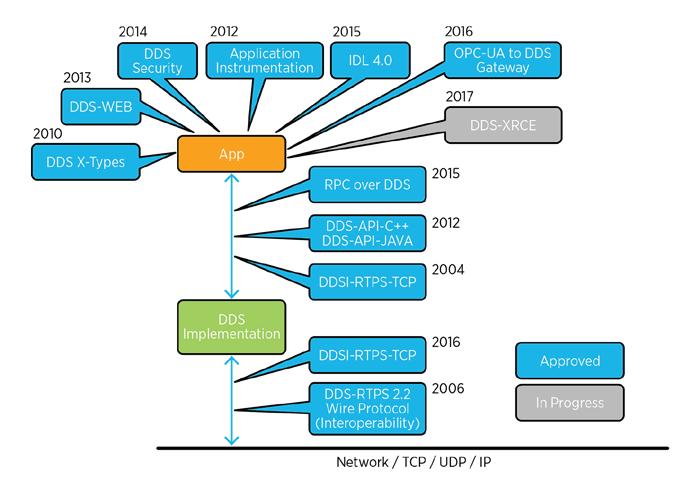
Exploring the advantages of chipscale vs. SMT integration for high-speed processing modules
Sponsored by Mercury Systems and Micron Technology
The performance of modern edge-processing solutions is becoming limited by traditional design methodologies. In this webcast, officials from Micron and Mercury Systems discuss the technologies and processes required to deliver leading performance at chip scale. Leveraging cross-industry partnerships, integration at chipscale with leading-edge memory and storage results in advanced packaged solutions that offer unparalleled space savings, processing capability, and more. (This is an archived webcast.)
Watch this webcast: https://bit.ly/41WUm5T
Figure 4 | A timeline of individual data distribution services (DDS) specifications is shown.
WATCH MORE WEBCASTS: https://militaryembedded.com/webcasts/archive/ INDUSTRY SPOTLIGHT
42 March 2023 MILITARY EMBEDDED SYSTEMS www.militaryembedded.com
nication layer between sensors, controllers, and actuators. DDS runs many of the most complex systems in the world: It powers the largest energy plants in North America, connects perception to control in autonomous vehicles, coordinates combat management in defense systems, drives a new generation of medical robotics, controls hyperloop and flying cars, provides 24/7 medical intelligence for hospital patients and emergency victims, and more.
At the TSOA-ID 2022 conference, RTI demonstrated interoperability between different native DDS applications (e.g., Unity and Epic Games Unreal Engine) and standards using DDS (e.g., FACE, ROS). The demonstration consists of two drone simulators: one using the Unity gaming engine, and the other using the Epic Unreal Engine gaming engine. These drone flight simulators publish location, video, and lidar using the Sensor Open Systems Architecture (SOSA) Interaction Binding and publish data through a SOSA aligned plugin. The lidar data is displayed using the RVIZ, a ROS 2 application, while location is fed into different cockpit display systems (CDSs). Figure 6 shows the architecture of the demonstration. The integration of all those components was made possible by using a common data model. New components can easily be added, and variations of the demo have been demonstrated at different trade shows.
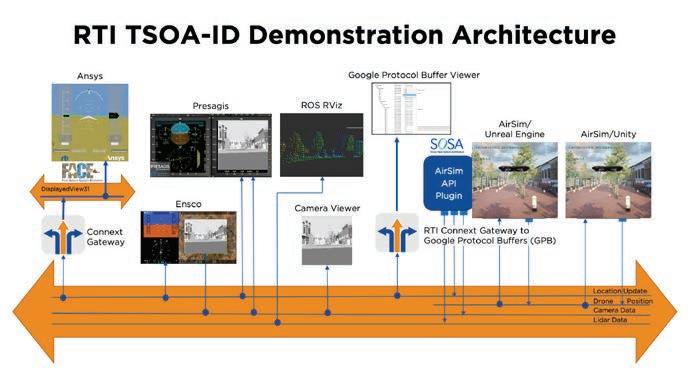
MOSA: No more vendor lock

MOSA recognized that to reduce cost, time to market, and to develop better, more flexible solutions, it must embrace open architectures. The era of black box and vendor-locked technologies has ended, and the industry must embrace open standards in all types of software ranging from commercial off-the-shelf to open source. MOSA is not just an innovative idea, it is a legal requirement –specifically, Title 10 U.S. Code 2446a.(b), Sec 805 of DoD Acquisition Regulations – to achieve the development of affordable, adaptable systems.
It has been a few years since the DoD Data Strategy was created, and the DoD continuously makes strides toward its goal of transforming into a datacentric agency. To support that transition, new systems also need to embrace a
datacentric strategy. Open standards such as DDS will become an essential part in supporting the DoD’s transition to a datacentric world. A datacentric open standard such as DDS enables the fundamental step for designing, developing, and deploying next-generation, distributed mission-critical systems and supports the MOSA principles of achieving lower life cycle costs in deployment and maintenance, faster time to market, and improved reliability during deployment in crewed and uncrewed systems. MES
Andre Odermatt is a principal application engineer at Real-Time Innovations (RTI). Before joining the Products & Markets group at RTI, Andre was a field application engineer at RTI for five years, working closely with customers on distributed systems. He has been participating in the FACE Consortium Integration Workshop Standing Committee (IWS) meetings for years. As a Field Application Engineer, he supported multiple projects such as the Ship Self Defense System (SSDS), General Atomics Ground Control Station, and Boeing AWACS, among others. Andre has over 30 years of experience with embedded systems, distributed applications, and communications protocols. He is an active participant in the FACE Consortium TWG Transport Services Segment (TSS) technical working group. Andre is the chair of the FACE integration workshop (IWS) standing committee.

RTI • https://www.rti.com/en/
Figure 5 | Shown: Some of the standards where DDS is used.
www.militaryembedded.com MILITARY EMBEDDED SYSTEMS March 2023 43
Figure 6 | The architecture of the TSOA-ID native DDS interoperability demo is shown.
Battlefield aerial-intelligence aircraft is backpack-portable
Aerospace engineering company WingXpand offers a backpack-portable aerial-intelligence aircraft that can be used by soldiers on the battlefield. The startup company – which launched in April 2022 – says that while the craft can be used as an unmanned aerial system (UAS) by farmers and public-safety crews, the 7-foot autonomous aircraft is also aimed at use by military personnel. The aircraft is similar in size and construction to a quadcopter drone, but has airplane wings that give it more power and endurance, which enables it to fly five times longer and carry a payload 10 times heavier than a traditional small military UAS.
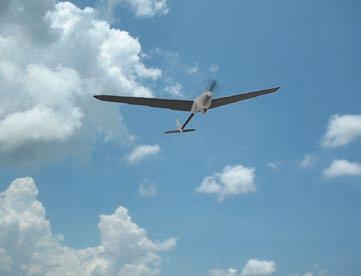
The company says the defense version of the UAS is aligned with the tenets of a modular open systems architecture (MOSA) approach, capable of carrying mesh radios for secure assured communications, specialty payloads, and edge AI [artificial intelligence]-enabled systems. WingXpand was one of 12 businesses out of 600 international companies to participate in Techstars Los Angeles, a startup accelerator program in partnership with U.S. Space Force and NASA’s Jet Propulsion Laboratory. Under the auspices of the program, WingXpand performed a demonstration for the U.S. Special Forces and has received written support from the U.S. Air Force
WingXpand | https://wingxpand.com/defense
Solid-state drive for AI, ML data center workload management
Micron Technology’s 9400 NVMe [nonvolatile memory express] solid-state drive (SSD) is intended for designers to use in critical workload applications including caching, artificial intelligence (AI) processing, and databases requiring extreme performance. The 9400 enables demanding use in such deployments as edge computing, cloud computing, offsite data centers, system integrators, and hyperscale designs. The company says that the 9400 PCIe Gen4 drive has 30.72 terabytes (TB) of storage capacity and ups the speed of input/output operations per second.
A standard two-rack-unit 24-drive server equipped with 30.72 TB Micron 9400 SSDs enables total storage of 737 TB per server. With this storage density, enterprises can store the same amount of data on half as many servers, according to the company. The system is also built to improve energy efficiency and reduce environmental impact, as the 9400’s expected reduction in input/ouput per watt reduces power consumption and therefore operational expenses, carbon footprint, and environmental impact.
Micron | https://www.micron.com/
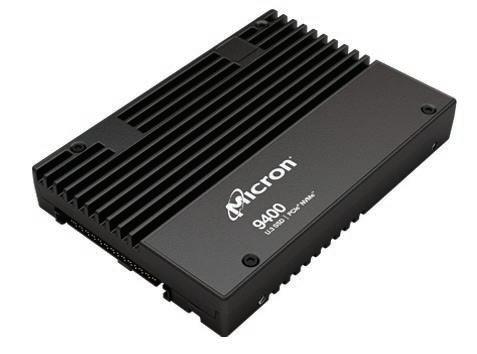
Comms module for COTS applications

TEWS Technologies offers a new PCI Express Mini Card module with three high-speed serial data communications channels that is designed for data communications, LAN/WAN networking, simulation, telecommunications, and COTS (commercial off-the-shelf) applications. The TMPE863 is a high-density input/output (I/O) solution that aims to minimize obsolescence issues using a serial communication control implemented in FPGA [field-programmable gate array] logic along with the bus master capable PCIe interface.
Data transfer to and from host memory is handled by way of TMPE863-initiated direct memory access (DMA) cycles for a minimum amount of host/CPU intervention. Each channel has a receive and transmit first in/first out (FIFO) of 512 long words (32-bit) per channel for high data throughput. Several serial communication protocols are supported for each channel, including asynchronous (with oversampling), isochronous, synchronous, and HDLC mode. The TMPE863’s operating temperature range is -40 °C to +85 °C; the part’s basic heatsink can be used to install additional cooling solutions like passive or active heatsinks or to enable a thermal connection to an enclosure. Software drivers are included for VxWorks, Linux, Windows, QNX, and Integrity.
TEWS Technologies | https://www.tews.com/
EDITOR’S CHOICE PRODUCTS 44 March 2023 MILITARY EMBEDDED SYSTEMS www.militaryembedded.com
3U SOSA aligned VPX modules
New Wave Design and Verification (New Wave DV) has released two new 3U VPX modules aligned with the SOSA [Sensor Open Systems Architecture] Technical Standard’s requirements. The V6061 and V6063 VPX modules feature Xilinx Versal Adaptive Compute Acceleration Platform (ACAP) Prime and AI options, NVIDIA (Mellanox) network interface devices, and high-bandwidth optical I/O options. The modules are intended to enable system developers to design in high-bandwidth processing in critical environments. The modules are specifically targeted at applications requiring a combination of high-speed data interfaces, heterogeneous or Adaptive Compute Acceleration Platform (ACAP) processing resources, network protocol offloads, and optional data distribution to adjacent processing resources such as CPUs and GPUs in the system.
Use cases for the V6061/V6063 modules include sensor interfacing, data processing, data distribution, and FPGA coprocessing in such military areas as radar, signals intelligence, electronic warfare (EW), video processing, and embedded communications systems. The ruggedized modules also meet the durability requirements of the VITA 47.3 standard.

Rugged 3U VPX plug-in card can be used in AI applications
The TR L9x/6sd-RCx from Concurrent Technologies is a rugged 3U VPX plug-in card that has several uses, including in artificial intelligence (AI) applications. The cards – designed in alignment with the SOSA Technical Standard for I/O-intensive processor boards – are available in two processor options: an eight-core solution fitted with the Intel Xeon W-11865MRE processor or a four-core solution fitted with an Intel Xeon W-11155MRE processor. Both of these processors come with an integral GPGPU [general-purpose graphics processing unit] engine with 32 execution units that can be used for display or acceleration purposes using OpenCL, OneAPI or OpenVINO interfaces for image processing or AI.
This is the first processor board from Concurrent Technologies that can support up to 100GBASE-KR4 Ethernet capability, which enables use in situations where very-high-throughput communications are needed. TR L9x/6sd-RCx supports a range of standard security capabilities including boot guard and total memory encryption and is fitted with a trusted platform module for key storage. Users can also opt for an additional “Guardian Package” for enhanced security or an optional M.2 module for storage that is write/ protect and Opal 2.0-compliant.
Concurrent Technologies | https://www.gocct.com/
PCIe board for extreme high-speed applications


The PFP-IV board is intended for extreme high-speed applications, based on the Xilinx Kintex UltraScale+ FPGA. The board is equipped to handle such tasks as 100 GbEth communications, 4/6 GHz ADC/DAC, ARINC 818, AURORA, JESD, sFPDP, and more. It is compliant with common standards including VITA 57.4, PCIe, and AXI4, and is intended to fit into both existing systems or brand-new architecture.
In addition to the Kintex UltraScale+ FPGA, the PFP-IV also features an FMC+ site, DDR4 memory, a system-on-module (SoM) based on Zynq UltraScale+ chip, a management system, 28 Gb/sec optical links, and more. The optional SoM also enables offloading of both processing and management if desired. The board is aimed at use in radar, telecommunications, EW, embedded tools, coprocessing, and test-bench applications.
Techway | https://www.techway.com/
EDITOR’S CHOICE PRODUCTS
| https://newwavedv.com/
New Wave DV
www.militaryembedded.com MILITARY EMBEDDED SYSTEMS March 2023 45
GIVING BACK
Each issue, the editorial staff of Military Embedded Systems will highlight a different charitable organization that benefits the military, veterans, and their families. We are honored to cover the technology that protects those who protect us every day.
This issue we are highlighting Dare to Dream Ranch, an alternative and holistic retreat for service members, veterans, and their families. The 501(c)(3) nonprofit organization has as its mission to help clients dealing with military-related PTSD, anxiety, depression, military sexual trauma, and mild traumatic brain injury to overcome their current situations, find their passion, and become successful civilians. Dare to Dream founder Karen Dalton – who is a certified health coach and whose father is a Marine – established the Rhode Island ranch in 2014 after gardening, nutrition, and horse therapy improved her own chronic condition. At Dare to Dream Ranch, veterans have access to equine therapy, woodworking, fly tying and fishing, kayaking, hiking, and beekeeping, all at no cost.
Equine facilitated coaching (EFC) at the ranch, according to information from the organization, uses horses’ responsive nature as a therapy tool. The structure of EFC – which is used in a number of veteran-therapy programs across the country – enables clients to work through personal challenges, as they learn how to manage current situations and future challenges with a focus on personal strengths and resources. The ranch’s use of agri-therapy – or therapy through farming – can enable clients to realize increased focus, confidence, community-building, nutrition and environmental awareness, and sense of achievement. Caring for animals and plants is said to reduce stress and anxiety and generate a sense of pride and well-being.
Clients can also access career coaching, resume writing, and housing resources, and can attend retreats at a tiny home on the premises. The goal, according to the organization’s materials, is mission-based therapy to teach purpose, structure, and camaraderie through farming.
For additional information, please visit https://www.daretodreamranch.org/.

WEBCAST
MOSA Virtual Summit: Applying open architectures in avionics, radar, EW, and C5ISR systems
Sponsored by Annapolis Micro Systems, Concurrent Technologies, Elma Electronic, Mercury, Lynx Software Technologies, SV Microwave/Amphenol, RTI, and Wind River
Powered by Military Embedded Systems, the MOSA Virtual Summit is designed to drive awareness and thought leadership around MOSA [Modular Open Systems Approach] initiatives like the Sensor Open Systems Architecture (SOSA) and the Future Airborne Capability Environment (FACE) and aims to study how they impact signal-processing, software, hardware, AI, and RF designs.
Sessions include a keynote address by David Tremper, Director, Acquisition Integration and Interoperability, Office of the Secretary of Defense; “MOSA for Crewed and Uncrewed Aviation Platforms,” “Bringing MOSA to C5ISR and Electronic Warfare Applications,” and “Applying a MOSA Strategy Across Multiple Domains.”
(This is an archived webcast event.)
Watch this webcast: https://bit.ly/3Fa0Zbs
Watch more webcasts: https://militaryembedded.com/webcasts/archive/
Real-Time Defense Systems Response Will Require
PCIe 5.0
By Mercury Systems
Today’s modern defense systems exploit massive volumes of data to provide warfighters with more accurate, complete intel. Examples include advanced radar object detection and AI-driven threat identification. Solving bandwidth challenges at the system interconnect helps ensure mission success.
In this white paper, learn about the critically important interconnect technology and ecosystem built around Peripheral Component Interconnect Express (PCIe) standards; specifically, how the emerging PCIe 5.0 protocol benefits a new generation of rugged, deployable application platforms. Gen 5.0 doubles the bandwidth over the Gen 4.0 spec, which similarly doubled bandwidth over ubiquitous Gen 3.0 devices, and is an integral part of the latest devices from Intel and NVIDIA.

Read this white paper: https://bit.ly/3J0EPtl
Read more white papers: https://militaryembedded.com/whitepapers
CONNECTING
MIL EMBEDDED
GIVING BACK | PODCAST | WHITE PAPER | BLOG | VIDEO | SOCIAL MEDIA | WEBCAST 46 March 2023 MILITARY EMBEDDED SYSTEMS www.militaryembedded.com
WITH
By Editorial Staff
www.militaryembedded.com
WHITE PAPER
TECHNOLOGY MAKING YOUR HEAD SPIN?
WE CAN HELP YOU MAKE SENSE OF IT ALL


Military Embedded Systems focuses on embedded electronics – hardware and software – for military applications through technical coverage of all parts of the design process. The website, Resource Guide, e-mags, newsletters, podcasts, webcasts, and print editions provide insight on embedded tools and strategies including technology insertion, obsolescence management, standards adoption, and many other military-specific technical subjects.
Coverage areas include the latest innovative products, technology, and market trends driving military embedded applications such as radar, electronic warfare, unmanned systems, cybersecurity, AI and machine learning, avionics, and more. Each issue is full of the information readers need to stay connected to the pulse of embedded technology in the military and aerospace industries.

militaryembedded.com

THE NEXT BIG THING IN RFSoC IS HERE
AND IT’S ONLY 2.5" × 4"
Models 6001 and 6003 QuartzXM modules enable the rapid integration and deployment of RFSoC technology. And the SWaP-friendly design is ideal for aircraft pods, unmanned vehicles and mast-mounted radars.

A Zynq® UltraScale+™ RFSoC plus a full suite of pre-loaded IP modules, robust Navigator ® software, high-speed 100 GigE interfaces and fully integrated hardware from Mercury helps shorten your development time and reduce your design risk.
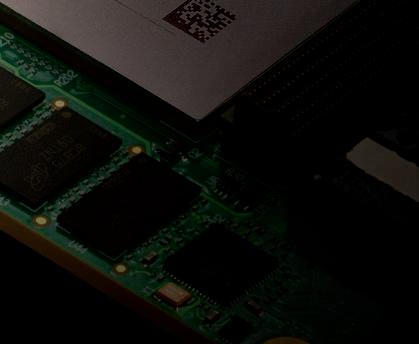

FORM FACTORS
QuartzXM Module


SOSA aligned 3U VPX
3U VPX
SFF platforms
PCIe
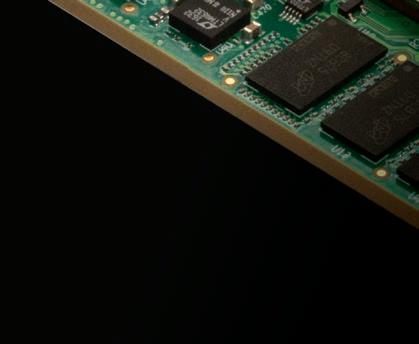
mrcy.com/go/mesrfsoc

MERCURY DIRECT RF BOARDS












 By John McHale
By Lisa Daigle
By Ivan Straznicky
Dan Taylor
By John McHale
By Lisa Daigle
By Ivan Straznicky
Dan Taylor

 By Flavia Camargos-Pereira,
By Flavia Camargos-Pereira,





























 By Paul Parkinson, Director, Field Engineering, Aerospace & Defense, EMEA, Wind River
By Paul Parkinson, Director, Field Engineering, Aerospace & Defense, EMEA, Wind River

 By Matt Medley
By Matt Medley








 By Dan Taylor
By Dan Taylor







 By John Sturm and Matt Renola, Vicor
By John Sturm and Matt Renola, Vicor

















































